























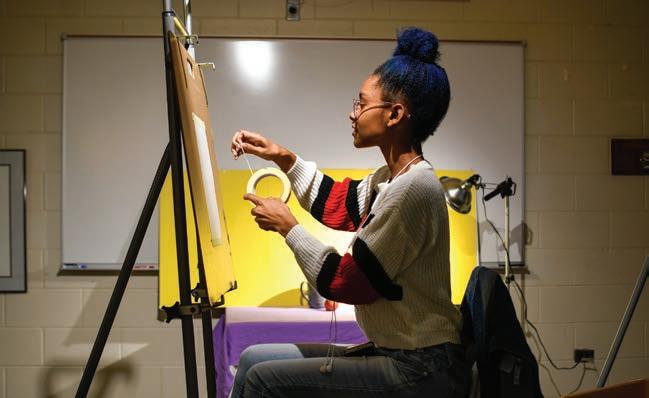







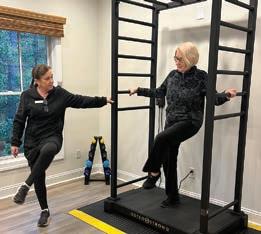
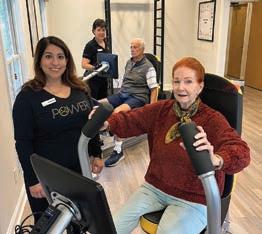
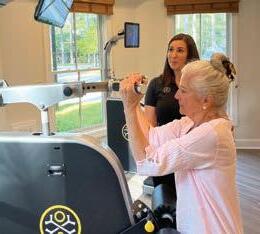








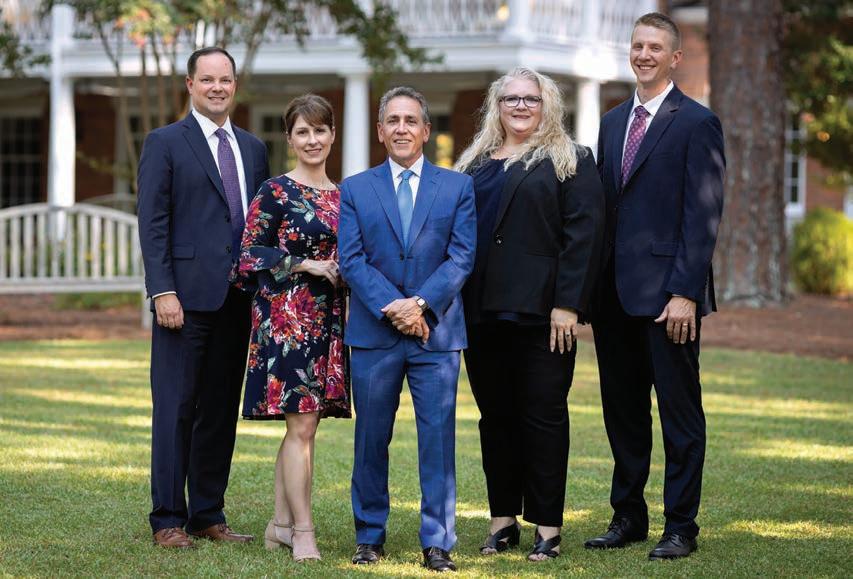
























































20% OFF all ne European linens and down, including custom orders.
Now through August 3rd, 2024 July 1st- 31st Coupon Code: Summer2025




Moore County’s Most Trusted Real Estate Team!



SEVEN LAKES NORTH • $480,000 154 OVERLOOK DRIVE
Unique 4 BR / 2 BA WATERFRONT property on Lake Echo in Seven Lakes North! This home offers stunning water views and generous living space throughout. The backyard gently slopes to the water’s edge where you can enjoy peace and tranquility on the private dock!


Attractive 3 BR / 2 BA WATERFRONT retreat on Lake Echo in 7LN! The interior is pleasantly inviting with a wood burning fireplace in the living room creating a cozy atmosphere and a nice kitchen with breakfast nook. Outside, relax by the water at your own private dock! SEVEN LAKES NORTH




JACKSON SPRINGS • $398,000 3 DEER TRACK ROAD
Attractive 3 BR / 4 BA chalet-style perfectly situated on the 3rd hole of the Red Fox course in Foxfire Village. Layout is bright and open with a double-sided fireplace between the living and family area. There is also an enclosed wrap-around porch to enjoy nature and beautiful golf views!


CARTHAGE • $240,000 1410 GRACIE LANE
Attractive two-story 3 BR / 2.5 BA Townhome in Carriage Place subdivision.The main level has an open concept living area flowing into a contemporary kitchen, while the upper level hosts all 3 bedrooms and two full baths. This energy-efficient end-unit would be a great investment opportunity or the perfect place to call home!




CARTHAGE • $235,000 3406 ALIBIRD LANE
Beautiful two-story 3
/ 2.5
Townhome in Carriage Place subdivision. The main level has a powder room and offers an open concept living area flowing into a contemporary kitchen, while the upper level hosts all 3 bedrooms and two full baths. Perfect for an investment opportunity or a place to call home!




Beautiful newly constructed 3 BR / 2.5 BA move-in ready two-story home. Layout is bright and open with nice finishes throughout. All 3 bedrooms and 2 baths on upper level. ABERDEEN • $459,900 525 N. SYCAMORE STREET













SOUTHERN PINES • $649,000 24 MCNISH ROAD
Amazing 3 BR / 2.5 BA GOLF FRONT home overlooking the second hole of the Talamore Golf resort! The layout is spacious with a light-filled living area offering expansive golf views, a secluded primary suite and a beautiful gourmet kitchen. Home is move in ready and well maintained.


JACKSON SPRINGS • $515,000 111 PINELANDS VISTA
Beautiful 4 BR / 3.5 BA Craftsman style home on generous 1.06-acre lot! This home offers exceptional living spaces inside and out. Inside, the main level has a spacious open concept layout and outside there is a large, fenced yard including a gazebo with hot tub, and grilling station with bar seating!




SEVEN LAKES WEST • $1,220,000 127 ANDREWS DRIVE
Spectacular 3 BR / 5 Full BA, 2 Half BA LAKEFRONT home on beautiful Lake Auman! Enjoy lake life to the fullest in this exceptional custom home with an open, sun-filled layout and amazing wide water views. Don’t miss this opportunity to live in the highly sought after community of 7LW.


PINEHURST • $1,150,000 4 INTERLACHON LANE
transferable PCC membership!


SEVEN LAKES WEST • $925,000 105 TUCKER COURT
Unique 3 BR / 3 BA rustic WATERFRONT retreat with expansive lake views, added privacy, and timeless character. This cozy home has a nice layout with beautiful spiral staircase and offers peaceful living across three thoughtfully designed levels.


SOUTHERN PINES • $720,000 565 VINTAGE LANE
Impeccably maintained 3 BR / 3.5 BA home with great gourmet kitchen, spacious living areas and inviting outdoor space. This home was thoughtfully designed with sophisticated fixtures and luxury upgrades throughout!
LISTING




Beautifully maintained 3 BR / 3 BA home in highly desirable 7LW! This split plan home offers a spacious living area with cozy fireplace and is open to the kitchen and breakfast nook while the upper level is host to a spacious bonus room! SEVEN LAKES WEST • $529,000 108 TEAGUE DRIVE

voluMe 21, no. 7
David Woronoff, Publisher david@thepilot.com
Andie Stuart Rose, Creative Director andiesouthernpines@gmail.com
Jim Moriarty, Editor jjmpinestraw@gmail.com
Keith Borshak, Senior Designer
Alyssa Kennedy, Digital Art Director alyssamagazines@gmail.com
Emilee Phillips, Digital Content emilee@pinestrawmag.com
Campbell Pringle, Design Intern
CONTRIBUTING EDITORS
Jim Dodson, Stephen E. Smith
CONTRIBUTING PHOTOGRAPHERS
John Gessner, Laura L. Gingerich, Diane McKay, Tim Sayer
CONTRIBUTORS
Jenna Biter, Anne Blythe, Tom Bryant, Susan Campbell, Bill Case, Tony Cross, Brianna Rolfe Cunningham, Mart Dickerson, Bill Fields, Tom Maxwell, Mary Novitsky, Lee Pace, Todd Pusser, Joyce Reehling, Deborah Salomon, Scott Sheffield, Rose Shewey, Angie Tally, Kimberly Daniels Taws, Daniel Wallace, Ashley Walshe, Claudia Watson, Amberly Glitz Weber
ADVERTISING SALES
Samantha Cunningham, Advertising Director 910.693.2505
Kathy Desmond, 910.693.2515
Terry Hartsell, 910.693.2513
Erika Leap, 910.693.2514
Christy Phillips, 910.693.2498
Ginny Trigg, 910.693.2481
ADVERTISING GRAPHIC DESIGN
Mechelle Butler, Scott Yancy
PS


Henry Hogan, Finance Director 910.693.2497
Darlene Stark, Circulation Director 910.693.2488
Tonnie Nester, Distribution Specialist
SUBSCRIPTIONS 910.693.2488
OWNERS
Jack Andrews, Frank Daniels III, David Woronoff In memoriam Frank Daniels Jr.
145 W. Pennsylvania Avenue, Southern Pines, NC 28387 www.pinestrawmag.com






















COMPLIMENTARY LOANERS

5 YEARS ROADSIDE ASSISTANCE*
Thanks to your support, we have won: Best of The Pines 2024 #1 Dealership Service Department. Schedule your appointment today to experience #1 Service
OUR BEST PRICE DIFFERENCE**
100% CUSTOMER SATISFACTION GUARANTEE
COURTESY CAR WASH WITH EVERY SERVICE




And may there be more questions and answers on the road ahead
By JiM DoDSon
My wife, Wendy, and I are a true marriage of opposites. She’s your classic girl of summer, born on a balmy mid-July day, a gal who loves nothing more than a day at the beach, a cool glass of wine and long summer twilights.
I’m a son of winter, born on Groundhog Day in a snowy Nor’easter, who digs cold nights, a roaring fire and a knuckle of good bourbon.

With age, however, I’ve come to appreciate our statistically hottest month in ways that remind me of my happy childhood.
Growing up in the deep South during an era before widespread air conditioning, I have fine memories of enjoying the slow and steamy days of midsummer.
Like most American homes in the late ’50s and early ’60s, the houses where we lived during my dad’s newspaper odyssey across the deep South were cooled only by window fans and evening breezes. The first time I encountered air conditioning was in a small town on the edge of South Carolina’s Lowcountry, where only my father’s newspaper office and the Piggly Wiggly supermarket were air-conditioned.
Trips to the grocery store or his office were nice, but I had my own ways to beat the heat. I’d pedal my first bike around the neighborhood or crawl beneath our large wooden porch, where I’d conduct the Punic wars with my toy Roman soldiers in the cool, dark dirt.
On hot summer afternoons, I’d sit in a wobbly wicker chair on the screened porch, reading my first chapter books beneath a slow-turning ceiling fan, keeping a hopeful eye out for a passing thunderstorm, probably the reason I dig ferocious afternoon thunderstorms to this day.
July also brings the Fourth of July, our national Independence Day, which I unexpectedly gained a new appreciation for during my long journey down the Great Wagon Road over the past six years. The Colonial backcountry highway brought my Scottish, German and English ancestors (and probably yours) to the Southern
frontier in the mid-18th century.
My fondest memory of celebrating the Fourth was sitting on a grassy fairway at the Florence Country Club, watching my first fireworks display. My mother brought along cupcakes decorated with red, white and blue icing.
That same week, Mr. Simmons, a cranky old fellow on our street, told my best friend, Debbie, and me that “only Yankees celebrate the Fourth of July because they won the War Between the States.”
My dad, a serious history buff, told me this was complete hogwash and began taking my older brother and me to hike the Revolutionary War battlefields of South Carolina at Camden, Kings Mountain and Cowpens, drawing us into the story of America’s fight for independence from Great Britain. When we moved to Greensboro in 1960, one of our first stops was the Guilford Courthouse National Military Park, where the pivotal battle of the Revolutionary War was fought.
My favorite Fourth of July celebration took place at Greensboro’s Bur-Mil Club in the mid-1960s. It was a lovely affair that featured races in the swimming pool and a par-3, 9-hole golf tournament for kids, followed by a huge company picnic in the dusk before a fireworks display.
That summer, I joined the club’s swim team and even briefly set a city record for 10-and-under in the backstroke, developing a daily routine that made beating midsummer heat a breeze. Every morning after swim practice, I played at least 27 holes under the blazing sun (bleaching my fair hair snow-white by summer’s end), grabbed a hotdog and Coke in the club snack bar for lunch, then headed back to the pool to cool off before my dad picked me up on his way home from work.
Looking back, it was hard to beat that summertime routine. Fast forward several decades, I was thinking about these pleasant faraway summers on the first day of my journey down the Great Wagon Road, beginning in Philadelphia. The city was still draped in the tricolors of Independence Day amid a record-breaking heat wave. After a morning hike around the historic district, I walked into the shady courtyard of the historic Christ Church, hoping to find some relief, but found, instead, Benjamin Franklin sitting on a bench. I couldn’t
believe my good luck. Rick Bravo was a dead ringer for Philly’s most famous citizen and said to be the most beloved of Philly’s Ben Franklin actor-interpreters.
He invited me to share the bench with him while he waited for his wife, Eleanor, to pick him up for a doctor’s appointment.
Over the next hour, Ben Franklin Bravo (as I nicknamed him) regaled me with several intimate insights about my favorite Founding Father, including how “America’s Original Man” shaped its democratic character and even had a hand in designing the nation’s first flag, sewn by Betsy Ross.
I thanked him for his stories and wondered if I might ask one final question.
He gave me a wry smile and a wink.
“God willing, not your last question nor my last answer,” he replied with perfect Franklin timing, casually mentioning that he was scheduled to undergo heart surgery within days.
I asked him what it was like channeling Benjamin Franklin.
Rick Bravo glanced off into the shadowed courtyard, where a mom and three small kids were cooling off with ice cream cones, chattering like magpies. My eyes followed his.
He grew visibly emotional.
“Let me tell you, it’s simply . . . wonderful. Next to my wife and children, being Ben Franklin is the most meaningful thing in my life.”
He told me how he met Eleanor many decades ago in the first of their many musical performances together, a major production of Oliver!
“Like America itself, we’ve weathered the ups-and-downs of life with lots of grace from the Almighty and a good sense of humor. As Ben Franklin himself observed, both are essential qualities for guiding a marriage or shaping a new country.”
Looking back, my hour with the man who was Ben Franklin proved the most memorable conversation of more than 100 interviews I conducted along the Great Wagon Road.
He even suggested that I drop by Betsy Ross’s shop over on Arch Street to buy a replica of the young nation’s first flag as a symbol of the birth of America.
Over the next five years, I carried this beautiful Ross flag, with its red-and-white stripes and circle of thirteen stars, the only purchase I made during my entire 800-mile journey, down the road of my ancestors.
To celebrate publication of my Wagon Road adventure this month, my Betsy Ross flag will proudly hang in front of my house for the first time, a gesture of gratitude to the dozens of inspiring fellow Americans I met on my long journey of awakening.
It will also hang in memory of my dear friend, Ben Franklin Bravo, my first interview on the Great Wagon Road, who died in January 2022.
I understand that Eleanor sang “Where is Love?” to him from their first musical together as he passed away. PS
Jim Dodson's 17th book, The Road That Made America: A Modern Pilgrim Travels the Great Wagon Road, is available at bookstores and online. Find his weekly writings at jwdauthor.substack.com.





45 CHESTERTOWN DRIVE - FOREST CREEK
Prestigious gated community. Top of the line throughout, wine cellar and much more.
$2,950,000 - GOLF FRONT

127 SAKONNET TRAIL – PINEHURST NO 6
Stunning one level home with private gardens. Pinehurst CC membership available for transfer.
$750,000

30 SHORT ROAD – OLD TOWN
Stately home with southern charm. Expansive Carolina Room.
$1,100,000 - SOLD

14 DUNGARVAN LANE – NATIONAL
Immediate Golf Membership. Perfectly situated on the 8th fairway, overlooking both the 7th and 8th fairways with panoramic views.
$899,000

12 SHENECOSSETT LANE – PINEHURST NO 6
Golf and water views from all main areas plus lower level. Deck, covered porch and patio all overlook the 14th green and pond views. Walls of glass on the inside provide lots of natural light and breathtaking views. Pinehurst CC Membership for transfer with buyer to pay reduced fees.
$724,000

1335 MIDLAND ROAD – KNOLLWOOD HEIGHTS
Large lot with private pool, and extensive garden. Numerous renovations and upgrades.
$1,595,000

30 MEDLIN ROAD - OLD TOWN
New Construction in OLD TOWN Pinehurst. High end, open floor plan, game room, first floor Master Suite. Walk to Pinehurst Elementary School, ball fields and playground. Fenced yard.
$1,395,000

535 DONALD ROSS DRIVE - PINEHURST
Custom brick home, large open sun filled rooms, hardwood floors, deck, pond, private.
$979,000

5 OXTON CIRCLE - PINEWILD MOVE-IN-READY in the gated community. Over 3000 sq. ft. includes main living area, Carolina Room and semi-finished Bonus Room. Home has many special features including Generator and encapsulated crawlspace.
$729,000

180 IDLEWILD ROAD – PINEHURST
Tucked away on quiet Idlewild Road. Lovingly maintained with lots of upgrades.
$495,000 - NEW ON MARKET
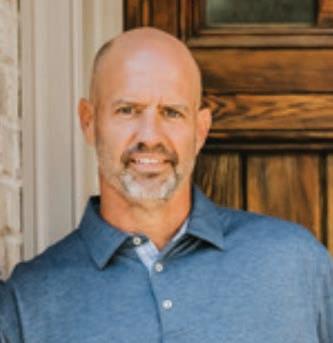








MORTGAGES IN ALL 50 STATES




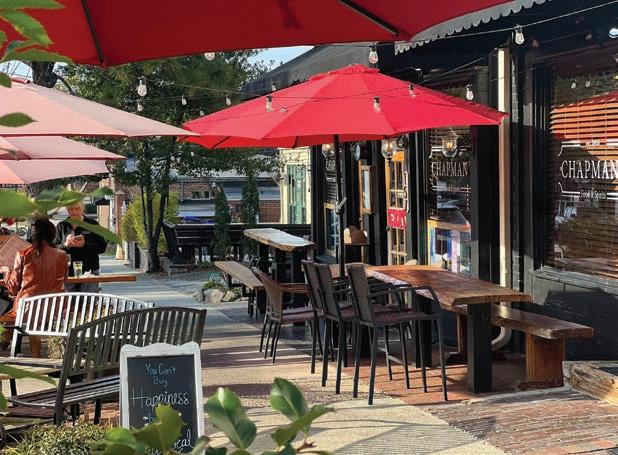





















It’s Peach Week and time to stake out a spot on the lawn to enjoy PeachGrass Summer, an evening of bluegrass and folk music sponsored by the Pinehurst, Southern Pines, Aberdeen Area Convention & Visitors Bureau at the Weymouth Center for the Arts & Humanities, 555 E. Connecticut Ave., Southern Pines. The evening opens with Ice Cream for Breakfast, followed by North Carolina native Cooper Morona and the main event: The Red Clay Ramblers with Bland Simpson. Bring your lawn chairs, blankets, picnic baskets and settle in. Food trucks, beer, wine and special peach desserts will be on hand. For additional info go to www.weymouthcenter.org.

Jump on an online conversation between Mike Ayers, author of Sharing in the Groove, and Kimberly Daniels Taws from noon to 1 p.m. on Wednesday, July 23. Filled with anecdotes and stories directly from the musicians, promoters, managers, roadies, et al., Sharing in the Groove is the oral history behind the rise of Phish, Dave Matthews Band, Widespread Panic, Blues Traveler and other bands that helped define the 1990s music scene. Then, on Monday, July 28, The Country Bookshop, 140 N.W. Broad St., Southern Pines, welcomes Karen White to discuss her book The Last Carolina Summer, a tale of sisterhood and secrets set in the South Carolina Lowcountry. Registration for both events is through www.ticketmesandhills.com.


Judson Theatre’s Summer Festival kicks off July 11 in BPAC’s intimate black box theater with I Do! I Do!, a musical with book and lyrics by Tom Jones and music by Harvey Schmidt. Based on Jan de Hartog’s play The Fourposter, I Do! I Do! is the story of the ups and downs of Agnes and Michael over 50 years of marriage. The 10 performances run July 11-13 and July 17-20. It’s followed by 10 performances of Dear Jack, Dear Louise, beginning Aug. 1-3 and finishing Aug. 7-10. Dear Jack, Dear Louise, by Tony Award-winning playwright Ken Ludwig, is the true story of the courtship of Ludwig’s parents, two strangers — a military doctor in Oregon and an aspiring actress in New York City — who meet by letter during World War II and dream of being together though the war keeps them apart. For the first time Judson Theatre will offer reserved seating in the McPherson Theater at the Bradshaw Performing Arts Center, 3395 Airport Road, Pinehurst. Afternoon matinees of both plays feature talk-back sessions with the actors. Tickets begin at $34, excluding fees, and can be purchased at www.ticketmesandhills.com.
You See America’s birthday celebration, Pinehurst style, begins on Thursday, July 3, with a free concert featuring the music of The Ray Band and a fireworks display featuring all kinds of ooohs and aaahs. There will be kids’ activities with food trucks and beverages on hand to keep the energy levels up. Fireworks begin at 9:15 p.m. Then, on the Fourth of July, the Pinehurst Independence Day Parade begins at 9:45 a.m. with the pet parade followed by the real deal through the streets of the village. Grab a spot at Tufts Memorial Park, 1 Village Green Road W., Pinehurst. Need more info? Go to www.vopnc.org.


Teens ages 13 to 16 can visit the Morehead Planetarium and Science Center on the campus of the University of North Carolina in Chapel Hill from 1 p.m. to 6:30 p.m. on Saturday, July 19. The outing is sponsored by Southern Pines Parks and Rec and includes dinner at Raising Cane’s in Chapel Hill following the tour. Buses depart from the Recreation Center at Memorial Park, 160 Memorial Park Court, Southern Pines. Cost is $29 for residents and $40 for non-residents. For more information call (910) 692-7376.
Join Somewhat Petty, the Asheville-based tribute band that plays the hits of Tom Petty and the Heartbreakers (and a Traveling Wilbury or two), on Saturday, July 19, from 8 p.m. to 11 p.m., on the stage of the Sunrise Theater, 250 N.W. Broad St., Southern Pines. Made up of of six musicians, the band has appeared in venues across the Carolinas including The Orange Peel, the Diana Wortham Theatre, the Grey Eagle Music Hall and Pub, The Ramkat and the Radio Room. Tickets start at $25 for general admission. For information go to www.sunrisetheater.com or call (910) 692-3611.
It’s August 1. It’s Friday. It’s toasty everywhere. So might as well let The Jonathan Robinson Band turn up the heat from 5 p.m. to 9 .m. with their bluesy, country, Southern rock sound on the First Bank stage next to the Sunrise Theater, 250 N.W. Broad St., Southern Pines. All y’all know the drill. There will be tasty bites and cold brews for purchase, but Cujo needs to stay at home in the AC. For additional information go to www.sunrisetheater.com.




Habitat for Humanity of the N.C. Sandhills will host its Women Build golf tournament Drive It Home! on Monday, July 14, at Forest Creek Golf Club, 100 Meyer Farm Drive, Pinehurst. All proceeds go to Habitat for Humanity. Both men and women are invited to play in the 9 a.m. shotgun, best ball event. The cost is $250 per person, including a bit of a nosh before and after. Be quick, deadline is July 1. For more information go to www. sandhillshabitat.org.


Ben Chapman, a Lafayette, Georgia, native who calls Nashville home, brings The Downbeat Tour, named for his recently released album, to the Sunrise Theater, 250 N.W. Broad St., Southern Pines, on Saturday, July 26, from 7 p.m. to 9 p.m. General admission begins at $25. In Downbeat, Chapman is at his most confident in his musical style, a “Southern-funk jam-band country thing.” Artists like Flatland Cavalry, Shelby Lynne, Muscadine Bloodline and The Steel Woods have cut his compositions, but now Chapman is focused on his own performances. For more information go to www.sunrisetheater.com or call (910) 692-3611.














































It’s your party and you’ll cry if you want to. We know, we know. We’ve all heard the song. That said, with Venus in Taurus until July 22, get ready for more emotional stability than you know what to do with. On the other hand, with Mercury going retrograde on July 17, a hiccup in communication could lead to a bit of a misadventure. The good news: Your intuition will guide you from here. The better news: There’s no going back.
Leo (July 23 – August 22)
Replace the filter.
Virgo (August 23 – September 22)
Dare you to dance in the rain.
Libra (September 23 – October 22)
Butter the toast.
Scorpio (October 23 – November 21)
Stop and smell the sweet pea.
Sagittarius (November 22 – December 21)
Hint: Take five.
Capricorn (December 22 – January 19)
The “Hot Light” is on.
Aquarius (January 20 – February 18)
Start labeling the leftovers.
Pisces (February 19 – March 20)
Bring a book along.
Aries (March 21 – April 19)
Three words: Lose the ’tude.
Taurus (April 20 – May 20)
Put your phone down.
Gemini (May 21 – June 20)
( June 21 - July 22) @bambooaboutiquesalon
Let your actions speak for themselves. PS
Zora Stellanova has been divining with tea leaves since Game of Thrones’ Starbucks cup mishap of 2019. While she’s not exactly a medium, she’s far from average. She lives in the N.C. foothills with her Sphynx cat, Lyla.















Terms and Conditions: $300 off any order of $1198 or more,$200 off any order of $998-$1198 or $100 off any order of $698-$998, on any complete custom closet, garage,or home office unit. Not valid with any other offer. Freeinstallation with any complete unit order of $600 or more. With incoming order, at time of purchase only. SPECIAL FINANCING For 12 months! Expires in 90 days. Offer not valid in all regions.








Introducing Penick Village’s Newest Expansion, designed to elevate your way of living.
Comfortable Living Spaces: Step into comfort with our beautifully designed Independent Living residences, each thoughtfully crafted to provide you with a home that’s as comfortable as it is stylish.
Village Pavilion: In our state-of-the-art wellness building, you can engage in various activities, including Pickleball, personal training, and an overall focus on your health and wellness.








Comprehensive Healthcare: The Terrace, our health services building, enhanced and renovated, providing exceptional personalized care tailored to your needs.
Welcoming Community: Enter through our updated Welcome House, a space designed to safely welcome you, and your guests, into our community.
Penick Village invites you to join our community, where we’re not just redefining retirement living, we’re elevating it to new heights.
Learn more about our community , where you have the freedom to focus on your wellness and relationships while living life to its fullest . Contact us today. Call (910) 692-0300 , email info@penickvillage1964.org , or scan the QR code to learn more.

by StePhen e. SmIth
Most Americans — and a generous portion of the literate world — probably consider themselves experts on Mark Twain, even if they have never read a word he wrote. After all, the white-suited former riverboat pilot was his own best PR man. The cottony hair, drooping mustache, bushy eyebrows and cutting one-liners were all a product of his unrelenting quest for fame and fortune, and his physical and intellectual attributes remain ingrained in our national character. His knack for producing quotable and acerbic squibs has left us with the impression that he was an urbane 19th century Yogi Berra. Which is reason enough to read Ron Chernow’s latest biography, Mark Twain. In 1,000 pages of beautifully crafted prose, Chernow explores in excruciating detail the life and times of America’s premier writer and consummate self-promoter, setting the record straight, for the time being.
Nothing about Twain is simplistic or straightforward. He was endearing, irascible, temperamental, plainspoken, mean-spirited, sentimental, generous, loving, neglectful, conscientious, lazy, etc. And he lived a triumphant and calamitous existence as a typesetter, riverboat pilot, journalist, failed businessman, stand-up comedian, world-renowned author, inventor, book publisher, political wit, and staunch campaigner for racial equality and against jingoism and imperialism. To his immense credit, he was the bane of every benighted politician, from presidents to school board members. He was also guilt-ridden, holding himself responsible for the fatal scalding of his younger brother in a boiler explosion and the death of his 19-month-old son, Langdon, whom he had taken out in inclement weather. He buried his wife and two daughters, and during his later years, his behavior was often problematic. Chernow manages to include every significant detail of

Twain’s life, and he supports his occasional judgments with meticulous research, including 180 pages of endnotes and citations. He also energizes the most mundane elements of Twain’s existence with his talent for narrative pacing and a prose style that reads effortlessly. It makes little difference if the reader is a longtime Twain aficionado or a superficial fan who learned of Twain’s achievements from Cliff Notes; Chernow’s narrative is so enthralling that his copious text seems vaguely insufficient.

More than half the book details Twain’s Horatio Alger years, his ascent from Hannibal to Hartford. The halcyon days of his literary success and blissful family life make for pleasurable reading, but the latter years of Twain’s existence — his descent from Olympus — will likely be a challenge for the casual reader.
The last quarter of the biography, which covers the three periods of Twain’s life that are the least fascinating and most disquieting, is not an easy read. His obsession with his “angelfish,” girls ages 10 to 16, with whom he surrounded himself, requires a lengthy and convoluted explanation that is likely to strike contemporary readers as, well, a trifle creepy.
After the death of his wife, Olivia, Twain sought out the company of young girls. These visits were frequent, occurring almost daily. In his 40s, Twain wrote, “Young girls innocent & natural — I love ’em same as others love infants.” Twenty years later, he said, “Nothing else in the world is ever so beautiful as a beautiful schoolgirl.” Twain didn’t find these liaisons embarrassing or shameful: “I have the college-girl habit,” he confessed, and when he visited Vassar to speak at a benefit, he surrounded himself with 500 college girls and noted that almost all were “young and lovely, untouched by care, unfaded by age.”
A few biographers have claimed that Twain was a latent pedophile, but Chernow maintains that Twain “had an insatiable need for unconditional love and got it from the angelfish, not from his daughters.” His daughters regarded the angelfish camaraderie with a mild degree of jealousy, but Twain had, over the course of his later years, intentionally disengaged from his grown children. Susy was dead at 24 of bacterial meningitis, Jean suffered from epilepsy, and Clara avoided her overbearing father by pursuing a singing career.
There is never a hint of sexual involvement with any of the

















































angelfish. Chernow notes: “If Twain thrashed himself with guilt about many things, he never had regrets about the angelfish. Far from being ashamed, he was positively proud of this development and posed with the girls for the press.”
Twain’s writing and lecturing made him rich, but he was an incompetent investor. He poured money into the Paige typesetting machine, a device so complex that it never functioned correctly. He also lost money investing in a publishing company. Having made a small fortune by issuing the memoirs of Ulysses S. Grant, he frittered away the money on foolish projects. Eventually, the publishing company failed, and Twain went bankrupt and had to embark on a world lecture tour to repay his creditors. Chernow manages to untangle Twain’s complicated finances while holding the reader’s undivided attention.
Later in his life, a disconcerting soap opera entanglement developed within Twain’s household. After his wife, Olivia, died, he and his surviving daughters relied on Isabel Lyon as a stenographer, confidant and household assistant, and an ambiguity arose regarding Lyon’s position in the household. Was she an employee or a family member? Had she assumed the position of Twain’s late wife? As Lyon gradually took over Twain’s affairs, her attachment to Jean and Clara grew strained. She eventually contrived to have Jean hospitalized, and her relationship with Clara collapsed. Twain fired Lyon for misappropriating household funds and became embroiled in a series of scandalous and exasperating lawsuits. In setting the record straight, Chernow tarnishes Twain’s carefully crafted image, revealing a human being who could be greedy and vindictive but also a writer whose words are as fresh and clear today as when he first wrote them. PS
Stephen E. Smith’s most recent book, The Year We Danced: A Memoir, is the recipient of a 2025 Feathered Quill Book Award.























Pinehurst Medical Clinic's Medical Weight Management services focuses on your why. We evaluate, treat, and advocate for patients with the chronic disease of obesity and obesity-related conditions using evidencebased approaches. With services directed by boardcertified physicians and diplomates of the American Board of Obesity Medicine.
METABOLIC WELLNESS • WEIGHT MANAGEMENT • DIET AND LIFESTYLE CHANGES TO ACHIEVE OPTIMAL HEALTH • WEIGHT HISTORY • NUTRITION • EXERCISE UNDIAGNOSED TYPE 2 DIABETES, HIGH CHOLESTEROL, OR SLEEP APNEA
Personalized treatments plans
In-person visits with one-on-one provider to patient weight management consultations
Guidance from a registered dietitian • Lab and medication management
Comprehensive nutrition, behavioral, and exercise recommendations




Necessary Fiction, by Eloghosa Osunde
Across Lagos, Nigeria, one of Africa’s largest urban areas and one of the world’s most dynamic cities, Osunde’s characters seek out love for self and their chosen partners, even as they risk ruining relationships with parents, spouses, family and friends. As the novel unfolds, a rolling cast emerges — vibrantly active, stubbornly alive, brazenly flawed. They grapple with desire, fear, time, death and God, forming and breaking unexpected connections, in the process unveiling how they know each other, have loved each other, and had their hearts broken in that pursuit. As they work to establish themselves in the city’s lively worlds of art, music, entertainment and creative commerce, we meet their collective and individual attempts to reckon with the necessary fiction they carry for survival.
The President’s Hat, by Antoine Laurain
Dining alone in an elegant Parisian brasserie, accountant
Daniel Mercier can hardly believe his eyes when French President François Mitterrand sits down to eat at the table next to him. Once the presidential party has gone, Daniel discovers that Mitterrand’s black felt hat has been left behind. After a few moments of soul-searching, Daniel decides to keep the hat as a souvenir of an extraordinary evening. It’s a perfect fit, and as he leaves the restaurant Daniel begins to feel somehow . . . different. Has he unwittingly discovered the secret of supreme power? Over the course of the next two years the iconic item of headgear brings success to the men and women who wear it. As it makes its way from head to head, the wearers find themselves acting with more confidence, decisiveness, authority and panache. Written with a delicious, wicked sense of humor, this delightfully quirky novel is a vivid re-creation of 1980s Paris, and an enchanting exploration of life’s possibilities.




Beneath the Moon and Long Dead Stars, by Daniel Wallace
In this dazzling collection of short fiction lives are altered in what appear to be minor moments: an unlatched lock, an old photo, a light left on too long. With Wallace’s masterful touch, those details transform into something mysterious and magical. His characters, hungry for connection, often find that everything hangs on a gust of wind or a single word.
Angelica: For Love and Country in a Time of Revolution, by Molly Beer
Few women of the American Revolution have come through 250 years of U.S. history with such clarity and color as Angelica Schuyler Church. She was Alexander Hamilton’s “saucy” sisterin-law, and the heart of Thomas Jefferson’s “charming coterie” of artists and salonnières in Paris. Her trans-Atlantic network of important friends spanned the political spectrum of her time and place, and her astute eye and brilliant letters kept them well informed. Angelica was at the red-hot center of American history at its birth: in Boston, when Gen. Burgoyne surrendered to the revolutionaries; in Newport, receiving French troops under the command of her soon-to-be dear friend the Marquis de Lafayette; in Yorktown, just after the decisive battle; in Paris and London, helping to determine the standing of the new nation on the world stage. She was born as Engeltje, a Dutch-speaking, slave-owning Colonial girl who witnessed the Stamp Act riots in the Royal British Province of New York. She came of age under English rule as Angelica, raised to be a domestic diplomat responsible for hosting indigenous chiefs and enemy British generals at dinner. She was Madame Church, wife of a privateer turned merchant banker, whose London house was a refuge for veterans of the American war fleeing the guillotine in France.


Inside Your Brain: Ten Discoveries that Reveal How the Brain Works, by Lucy Ann Unwin, Caswell Barry, María Jesús Contreras
The human brain is famously complex and difficult to understand.


Toes, Teeth, and Tentacles: A Curious Counting Book, by Steve Jenkins, Robin Page
From the two-tongued loris to a scallop’s 200 eyes, readers will find joy in numbers with this latest book by the Caldecott Honor-winning team of Jenkins and Page. Toes, Teeth, and Tentacles celebrates and highlights the numerous unusual and strangely fascinating features and appendages of all kinds of animals, from horns to toes and stomachs to hearts. While not a counting book in the traditional sense, readers will enjoy learning all kinds of fun facts from the animal world as they look for fingers and fins! (Ages 4 – 8.)

Inside Your Brain takes young readers on an irreverent gallop through history to uncover 10 groundbreaking discoveries that have led to our current understanding of how the brain works. The ancient Egyptians discovered in battle that the brain was more important than they’d thought; Luigi Galvani sent electric shocks through the legs of dead frogs and uncovered how brain cells work; Phineas Gage’s unfortunate accident on the railroads revealed that you can survive a metal rod through the head; and some unwitting kittens helped us understand how our brain develops. This entertaining and engaging deep dive into the most mind-boggling area of science is sure to fascinate and delight young readers. (Ages 8 – 12.)

a
The True Story of Kipekee, the Giraffe Born without Spots, by Elizabeth Weiss Verdick
It’s summertime at the Brights Zoo, and something very special is due . . . a new baby giraffe. And this giraffe is extra extraordinary. She is all one shade — not a spot to spot! Mama loves her baby unconditionally and knows she is perfectly herself, but will everyone else see it, too? Based on the true story of Kipekee, a rare, reticulated giraffe born without spots who captured the world’s heart, this adorable and uplifting picture book celebrates the joys of being unique. (Ages 4 – 8.) PS
Compiled by Kimberly Daniels Taws.






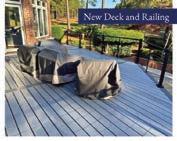





by bIll FIeldS
My birthday came and went this spring without much fanfare, but not before I remembered that it marked 50 years of driving.
These days, not all teenagers are eager to get behind the wheel upon turning 16. That wasn’t the case in North Carolina half a century ago, when obtaining one’s driver license was a rite of passage that preceded the right to vote or buy a beer.

Of course, we were well prepared for the road test and written exam at the police station in Aberdeen because we had taken driver’s education in high school, where for decades instructor Otis Boroughs taught the course with the tenacity of a drill sergeant and the thoroughness of a graduate-level professor. Boroughs had intense eyes, a buzz cut, and his tone was as serious as the 16-mm fi lms about the perils of drinking and driving that he showed during class.
When you were out in the training car with him, Boroughs rode shotgun. He was watchful and wary, making sure your hands were on the steering wheel at 10 and 2 o’clock, and that you were keeping the proper distance from the car ahead (a car length for each 10 miles per hour of speed). There was usually a second student, in the backseat, waiting for his or her turn to be scrutinized. I can still sense my right foot trembling over the pedals when Boroughs had me pull over on a quiet side street in Southern Pines to demonstrate whether I knew how to parallel park.
Mr. Boroughs died last year, at 87, but I believe he would be pleased that his favorite mantra still comes to me as easily as my Social Security number: “Keep your eyes on the road and your mind on the job of driving.”
Plenty of people driving these days never heard that slogan, or if they have, don’t follow it.
I was reminded of that recently when I drove from Connecticut to North Carolina and spent a couple of weeks in Southern Pines before returning north. On interstates, the lane drifters and weavers were many. For lots of drivers, a turn
signal is merely a suggestion to be ignored. Tailgating is common.
The day after I got to town, while stopped at a red light on U.S. 15-501, a car hit my small SUV from behind.
“I wasn’t paying attention,” the young driver, a man who appeared to be in his 20s, admitted as we spoke before pulling into a parking lot to exchange information. It’s clear he wasn’t following either tenet of Mr. Boroughs’ frequent classroom admonition.
Fortunately, the damage to my vehicle — and his — was very minor. And hopefully, he learned a lesson.
I certainly was taught something a decade after getting my license, in what has been my closest call on the road. I was hurrying to Newark airport to catch a flight to Raleigh after the conclusion of the 1985 U.S. Amateur at nearby Montclair (N.J.) Golf Club. It had been raining, and I was going too fast on the exit ramp when I lost control. My rental car skidded sideways for what seemed like the length of a football field but probably traveled half that distance. I didn’t hit anything. After catching my breath, I continued — slowly — to the rental car return.
My other near misses have been because of others. I’ve dodged steel beams falling off a flatbed truck in Memphis, a car barreling through a red light in High Point, and a motorcyclist darting through traffic as if it was a death wish on I-85 in southern Virginia.
Perhaps owing to part of a semester spent with Otis Boroughs, along with my personality, I don’t have a lead foot. One time, however, early one morning on a long, lonely stretch of straightaway in rural Nebraska, driving a rental car that possessed some pep, I decided to see what it felt like to travel over 100 mph. Just once.
I topped out at 107 in my Don Garlits moment, keeping my eyes on the road and my mind on the job of driving all the while. PS
Southern Pines native Bill Fields, who writes about golf and other things, moved north in 1986 but hasn’t lost his accent.





by tom m aXwell

There are music festivals across the length and breadth of North Carolina this year — more than you will have either the time or gas money to attend. July alone features four worthy of mention, existing on the widest possible spectrum of musical and geographic diversity. We’ve got fiddles in the highlands, jazz on the beach, classical quartets in the Nantahala National Forest, and a regular smorgasbord of sounds in the Piedmont.
The 46th annual Festival for the Eno kicks off in Durham on Friday, July 4. The two-day event features over 60 artists performing on four different stages, including former Carolina Chocolate Drops’ Dom Flemons, local poet and musician Shirlette Ammons, and the Empire Strikes Brass.
There will be some novel attractions as well. “Since the festival’s inception, our Grove stage has focused primarily on traditional music through the lens of Americana,” festival director Bryan Iler says. “This year, there is still going be all that bluegrass and country and clogging, but there’s also going be a wider representation of traditional cultural music that I think is a little more representative of the Triangle community. We’re going to feature a full mariachi band, a traditional West African Senegalese pop band, and Congolese percussionists. Oh, and Rabbi Solomon (Hoff man) from Chapel Hill has put together a klezmer group.”
And there’s more than just music. Attendees can learn fly-fi shing, postermaking or browse handmade arts and crafts from 80 different vendors. “It’s really a salad bar of ways to have a good time and plug into our community at a deeper level,” says Iler.
July 4 is also opening day for the Ocean City Jazz Festival on Topsail Island. “It's a three-day event with three artists per night,” says Carla Torrey, who has organized the festival with her husband, Craig, for the past 12 of its 15 years. “We are trying to promote the history of the community and support its legacy.”
The Ocean City Beach Community is a neighborhood 3 miles north of Surf City that stretches from beach to sound. It was founded in the late 1940s as an interracial corporation where African Americans could own beach property in the days of segregation. A 700-foot lighted pier constructed in 1958 — at the time the only pier in the South Atlantic open to people of color — and many of its 100 or so Black-owned homes were destroyed by Hurricane Fran in 1996. Though those structures were not rebuilt, the community remains, and the festival is committed to preserving and expanding on its legacy.
This year’s Ocean City Jazz Festival features artists like Jackiem Joyner, Jazz Funk Soul, Nathan Mitchell, The Double Bass Experience and the John Brown Little Big Band, featuring Camille Thurman. Related events include an exhibition of paintings by artist Rik Freeman called “Black Beaches During Segregation” (on display starting June 28), day parties featuring line dancing instructors, food vendors, and a boozy “Uncle Nearest Experience” with executive bourbon steward David
Neeley. (Uncle Nearest Premium Whiskey honors the memory of Nathan “Nearest” Green, the formerly enslaved man who taught Jack Daniel the art of distilling.)
“We’re truly a jazz festival,” Torrey says. “All the music is going to be jazz, and we do a mix of smooth and straight ahead so that everybody gets to appreciate it as a genre.” Music plus an ocean breeze and sand between your toes? Sounds like a plan.
The 44th annual Highlands-Cashiers Chamber Music Festival kicks off July 5 in the southwestern counties of Jackson and Macon, roughly 400 miles from Topsail Island. You don’t have to be in a rush to get there, though; this festival lasts until August 10, featuring four concerts every weekend.
“It is a six-week festival of predominantly classical music,” Executive Director Nancy Gould-Aaron says, “but we do bring in other things to mix it up a little bit. We have jazz versus classical this year. In the past we’ve brought in Mark and Maggie O’Connor, so we’ve had a little bit of bluegrass, too. We probably have three or four quartets a season. Not too many duos, but we have a lot of soloists and put them together. For our gala event, we’ll have enough musicians to make up an orchestra.”
This year’s Highlands-Cashiers Chamber Music Festival features the North Carolina debut of Paul Colletti’s Viola Quintet
featuring The Viano Quartet, poet laureate Rita Dove, the Whitehead Family Young Pianist Concert with Zitong Wang, the Pacifica Quartet featuring Sharon Isbin on classical guitar; and, a final gala “Cellobration” — a concert with eight cellos led by the Grammy-winning cellist Zuill Bailey.
The two-day 54th annual Old Time Fiddlers Convention, held in Ashe County Park in the state’s northwest corner, begins July 25. It takes place rain or shine, so bring your camping gear and get ready to hear a slew of banjo, fiddle, guitar and mandolin by the likes of Sassafras and the New Ballards Branch Bogtrotters. As usual, there will be open jam sessions galore, as well as competitions for young and old musicians alike, featuring several thousand dollars in prizes. Proceeds from the festival go to support JAM, the Junior Appalachian Musicians program, an organization that instructs third- to fifth-graders in fiddle, banjo and guitar.
This quartet of festivals barely scratches the surface of North Carolina’s musical itch. What an opportunity to explore the state and expand your musical horizons. PS
Tom Maxwell is an author and musician. A member of Squirrel Nut Zippers in the late 1990s, he wrote their Top 20 hit “Hell.” His most recent book, A Really Strange and Wonderful Time: The Chapel Hill Music Scene 1989-1999, was published in 2024.



HOURS
Breakfast Monday - Friday: 8:00am - 10:30am Saturday: 8:00am - 11:30am
Lunch Monday - Friday: 10:30am - 2:30pm Saturday: 11:30am - 2:30pm
Brunch - Sunday - 9:00am - 1:00pm









































Story and P hotogra Ph by tony CroSS
One of the simplest cocktails to make was also one of the most popular during the pandemic. Ranch water is the drink, and it hails from West Texas, though the precise regional claim to fame is debated.
There are Texas natives who say they grew up drinking the tequila, lime juice and mineral water highball, but the late Kevin Williamson, chef and founder of Ranch 616 in Austin, takes credit for its creation. Their website describes how Williamson used to “sneak” the mix into his water bottle while hunting with his father. The importance of using Topo Chico mineral water is key to this cocktail, which helped make the brand so popular there were nationwide shortages in 2021-22.
Regardless of the drink’s origin, everyone can agree that this is one of the most refreshing cocktails to beat the summer heat. There are two ways I enjoy Ranch waters: in a glass with ice or built in a Topo Chico bottle. PS
Tony Cross owns and operates Reverie Cocktails, a cocktail delivery service that delivers kegged cocktails for businesses to pour on tap — but once a bartender, always a bartender.

Specifications
2 ounces blanco tequila
1/2 ounce fresh lime juice
Topo Chico sparkling water
Execution
In a glass: Add tequila and lime juice in a rocks or highball glass with ice. Top with Topo Chico.
In a Topo Chico bottle: Drink 3 ounces from the bottle and add tequila and lime juice. Put your thumb over the top and slowly turn bottle upside down to integrate ingredients. Don’t shake. Turn the bottle right side up and slowly remove thumb from the top. We’re not spraying Champagne in a locker room here.

Story and P hotogra Ph by roSe Shewey
Lowcountry boil is a culinary tradition I like to show off to trans-Atlantic friends and family that visit us in North Carolina. It’s American food culture few people abroad know exists — and it’s a showstopper. The moment you spread out a stockpot full of seafood, sausages and corn on the dinner table, conversations halt, anticipation rises, and strangers become instant friends digging into this delicious feast.
Surprisingly, though, Lowcountry boil doesn’t go back as far in history as I had expected. In the 1960s, a young chap named Richard Gay joined the South Carolina National Guard, where he cooked for his mates at the Beaufort Armory during weekend drills. On one such occasion, he gathered up chow hall leftovers, threw them in a large pot together with fresh shrimp he had sourced from his father’s seafood company, and began cooking. Once finished, he spread out the meal across the tables of the banquet hall — and the legendary low country boil was born.
While most folks call it Lowcountry boil these days, it was originally known as “Frogmore stew.” Frogmore, which technically doesn’t exist anymore, was part of St. Helena Island, near Beaufort, South Carolina — Richard Gay’s hometown community. Perhaps the name Frogmore stew fell out of favor because, well, it’s not really a stew. All liquids are drained off. But don’t get hung up on names. Give this one-of-a-kind Lowcountry feast recipe adapted from The Food, Folklore and Art of Lowcountry Cooking, by Joseph E. Dabney, a try this summer. PS
German native Rose Shewey is a food stylist and food photographer. To see more of her work visit her website at suessholz.com.
Lowcountry Boil (Serves 6)
Ingredients
4 tablespoons Old Bay seasoning (or make your own, see notes)
1/4 pound (1 stick) butter
4 tablespoons salt
2 pounds kielbasa sausage, cut into quarters
1 large onion, roughly diced
2 pounds small new red potatoes, cut in half
6 ears fresh corn, cut in half
3 pounds peeled deveined shrimp (with tail on)
Fill a large pot (6-quart or bigger) two-thirds full of water and bring to a rolling boil. Add Old Bay seasoning and reduce heat to a simmer. Next, add butter, salt, sausages, onion and potatoes and simmer for about 15 minutes. Add corn, cook for an additional 3-5 minutes then add shrimp. Cook shrimp for roughly 3-6 minutes, until they turn pink and white (instead of opaque). Turn off the heat and allow ingredients to set for a few minutes, drain liquid and serve with more seasoning, cocktail sauce, melted butter dip and coleslaw, if desired.
To make your own Old Bay seasoning, combine 1 tablespoon celery salt; 1 tablespoon hot paprika; 1 tablespoon smoked paprika; 1 1/2 teaspoons mustard powder; 3/4 teaspoon cayenne pepper; 1/2 teaspoon ground black pepper; 1/2 teaspoon ground white pepper; 1/4 teaspoon ground bay leaves; and a pinch each of ground cinnamon, ground cloves and ground nutmeg. Store in an airtight container.







by Janet wheaton
In 1976, at the age of 25, I left the U.S. with my French husband. People ask me where I met Jean-Claude, expecting to hear an exotic story set in a romantic Parisian café, and they are surprised to hear that we met in Kansas. I only mention him because he’s the reason I spent 14 years living in Canada, Germany and The Netherlands, where Jean-Claude and I divorced in 1989.
I was single, 39 and on my own for the first time when I landed in L.A. to pursue a new career and rent an apartment, both of which are impossible in Southern California without an automobile. So, my first order of business was to acquire one.
It was the end of a hot and sunny day, my second on the new job, when I stepped out of a taxi at the local Honda dealership and stared out at a sea of automobiles.
“Looks like you’re a lady in need of a new car.” It had taken less than 10 seconds for a salesman to beam his body from inside the showroom and materialize on a spot directly in front of me. I don’t remember his name, so I’ll call him Mike. Mike was a thin man of average height, with a tan face of pleasant features that were unfortunately overshadowed by a ghastly toupee.
“What did you have in mind? A Civic, Accord, CRX, wagon, hatchback?”
What I had in mind was a simple business transaction. The simpler the better. I looked past Mike and pointed to a sleek and shiny sedan parked in front of the showroom. It was taupe. Cars don’t get any simpler than taupe. “What’s that one?”
Mike looked over his shoulder. “That’s a 1990 Accord. Been a dealer’s car, just driven a couple of months by one of our execs.” We walked over to it and he opened the door. “Want to take it for a drive?”
“Sure.”
“You have a driver’s license?”
“Of course.”
It was Canadian. I also had a license from The Netherlands, which practically qualified me to fly an airplane. I had the sense that, for a sale, Mike wouldn’t have cared if the license came from Kuala Lumpur. He went inside for the key.
“All set.” Mike tossed the key to me, and I slid behind the steering wheel and studied the dashboard.
“The car’s insured, right?” I couldn’t help messing with him.


“Absolutely, every car on the lot is insured,” he said, though I noted a slight furrow of concern creasing his brow.
A moment later we were cruising down the street as Mike described the car’s features: power windows and mirrors, cruise control, AM/FM stereo cassette sound system. He droned on about the LX model upgrades: comfier this, snazzier that.
The car had almost 8,000 miles on it but Mike assured me it still came with a new automobile warranty. The exec must’ve been a very tidy guy — the interior was pristine and still had that new car smell. After driving it a few blocks, I took it out on the Freeway and eased down on the accelerator. Hold on to your hair, Mike, I thought.
“So, what were you doing up there in Canada?” he asked, his eyes fi xed firmly on the highway.
“You know, working, living, stuff.”
“Did you like it?”
I gave him the answer I’d settled on over the years. “Some things a lot; some things not so much.”
When I pulled back into the dealership 10 minutes later, Mike asked me if I’d like to try out another model.
“No, this one’s fine. How much is it?”
Mike seemed pleasantly surprised. “Let’s go back inside and talk about that.” He ushered me into his office and shut the door. Mike flipped through some paper, punched some numbers into his computer and smiled at me like he’s ringing up my discount coupons. But I hadn’t come in that day quite as unprepared as it may have seemed. A friend of a friend was a Honda dealer who had been willing to violate the industry’s blood brother oath by giving me some ballpark figures.
When Mike announced what he thought “his manager might accept,” I countered with the one my friend of a friend had assured me he would accept. I padded it a bit because I was anxious to get back to my new apartment and have a glass of pinot grigio. Mike frowned. I smiled politely. He sighed a dubious sigh. “Let me see what I can do . . . ” he said and left the room.
I could see him consulting with his manager, a conversation that I felt certain was more likely to be about the Dodgers than about me. When Mike came back into his office and closed the door behind him, he gave his head a shake meant to convey his utter disbelief. “This must be your lucky day.” He grinned at me. “You’ve got yourself a deal.”
Then he asked me about financing.
“I’m paying cash,” I said. I’d come back into the country flush and with an aversion to credit.
“OK,” Mike said, rubbing his hands together. “We take cash. You can write me a check and drive that beauty home this evening.”
I shook my head. “Sorry, I need to call my insurance company first.”
Mike countered dismissively, “Actually, my dear, your current car insurance will cover the new one automatically.”
Oh, right, I’m just a lady.
“I don’t have any insurance . . . in this country,” I said. “I’ll get that set up first thing in —”
“You don’t have to drive it home this evening,” he cut me off. “You can give me a check, we’ll slap a sold sticker on it and it’ll be sitting here waiting for you.”
I shook my head again. “Once I give you a check and the car’s mine, I don’t believe your insurance would cover it if someone were to drive it and wreck it.”
Mike stood up and came around his desk, leaned against it, while I remained seated. He lowered his chin. That furrowed brow was back and deepening into annoyance. “But no one,” he said, “is going to drive it.”
He was obviously not familiar with hypervigilance, for which I am a poster child.
I stood up and smiled. “You never know.”







I sensed his mounting exasperation. “If you don’t take advantage of this opportunity today,” Mike straightened up, positioning himself between me and the door. “Someone else might.”
This brought to mind a boy in college who’d once issued that same warning. I wanted to tell Mike what I’d told that guy. But I was feeling more indulgent with Mike because he was, after all, just trying to earn a living.
“I want to buy this car but if it’s gone in the morning, I’ll buy another one. So, I guess I’m ready to go.” I glanced at the closed door behind him. “Unless you’re holding me captive?”
“Of course not!” He jumped aside. “I just know how much you want that car.”
“I do, and I believe it will be here tomorrow morning,” I said and asked if he might call me a cab.
It took me a little longer than I anticipated to get my insurance set up, but when I finally got back to the dealership, I was glad to see that “my” car was indeed still there. Mike’s face lit up when he saw me.
“Have you been guarding my car for me all this time?” I asked.
“Yes, ma’am,” he said and laughed. A good deal, I once heard, was one that was just as good for the other guy as it was for you. I don’t know about Mike but I got 20 years out of that Accord. PS
Janet Wheaton is a Pinehurst resident and native North Carolinian. She is working on a memoir in essays.






































The Sandhills Photography Club was started in 1983 to provide a means of improving members’ photographic skills and technical knowledge, for the exchange of information, and, by club activity, to develop membership potential and public interest in the art of photography. For meetings and information visit www.sandhillsphotoclub.org.
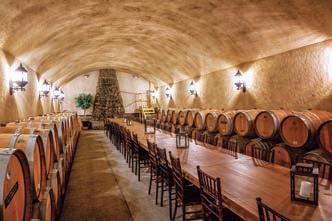


























by deborah Salomon


A machine for every task
happy truth is Americans have invented and popularized an appliance to perform almost any heretofore manual or mental task, from baby monitors to heart surgery and self-driving cars. The most ubiquitous: cellphones. I love how businesses assume every American owns and uses a cellphone to the fullest extent of its capabilities.
Don’t get me wrong. I’m certainly not knocking them. That would be like knocking Taylor Swift. Or penicillin. Cellphones save lives. But their presence, especially the apps, precludes down time, a blissful indulgence fading fast. There’s proof aplenty in any airport departure lounge, where I slouch in a corner seat, eyes closed, waiting out the delay, while fellow passengers watch Martha Stewart dunk biscotti or Cooper Flagg dunk a basketball.
How about gas fireplaces? A wood-burning fireplace is meant to warm a room. Its beauty and aroma are added attractions. The sight of a glowing log turning to ash doesn’t result from a flipped switch. Why not just put a crackling fire from Netflix on the flatscreen, take the money you saved and buy a cord of dry wood and a bundle of kindling?
Air fryer ovens are huge. Maybe Emeril Lagasse has a milelong counter, but most kitchens barely accommodate a blender, toaster, food processor and coffeemaker. Yet the ads are so tempting. Let’s build an addition on the house.
Tankless hot water heaters? Sure, you won’t need a clumsy
tank in the basement or utility closet. But a power failure shuts off hot water immediately.
I rise long before the sun — and turn on the TV, rich in ads for snake oil, love potions and gadgets like a pedal exerciser where, it seems, electricity pushes the pedals and feet/legs go along for the ride. “So quiet your co-workers won’t know you’re using it.” Personally, I prefer a side of noise and a splash of sweat with my exercise.
But I’d have a hard time living without residential AC.
I don’t hear much about “smart” homes anymore — the kind where you can turn up the heat, switch on the lights and sound system while you’re driving home on the Interstate. That always sounded creepy to me, maybe even dangerous.
Talk about creepy . . . computer-generated personal assistants like Siri, who provide information and answer questions. Most are female, perhaps some kind of 21st century continuation of the cute little secretary image?
And, when your self-driving, self-navigating, self-parking car suffers a fender-bender, how do police or insurance adjusters determine blame, aka, human error?
Occasionally, an improvement backfires. When digital clocks replaced analog, a generation of children had trouble telling time. Same thing, when Velcro replaced shoelaces and the overhand knot became an endangered species.
Of course these are exceptions leading up to the bogeyman called AI, which not even its formulators can explain.
No thanks. I have enough trouble with the real stuff. PS Deborah Salomon is a contributing writer for PineStraw and The Pilot. She may be reached at debsalomon@nc.rr.com.


























by SuSan CamPbell
It is the sound of summer: You may not be paying attention, but it’s there. The slurring “pee-a-wee” of the eastern wood-pewee is echoing all over central North Carolina at this time of year. On the hottest of afternoons this bird continues to call even though its brethren are now quiet. The spring cacophony of breeding birds may have been replaced by the buzzing of cicadas and chirping crickets, but the pewee continues making his trademark vocalization. The species has long been considered a hallmark of Eastern forests. Although not as plentiful as it was before humans began altering the landscape, it can still be found widely throughout the region.
Eastern wood-pewees are flycatchers: carnivorous birds that have the talent for snapping insects out of midair. They are acrobatic fliers that use a perch to scan for large, winged insect prey such as dragonflies, butterflies, moths and beetles. As a result of this foraging strategy, pewees spend much of their time in the open during the warmer months. However, if it were not for their loud calls, these little birds would be easily overlooked. Both males and females are a drab gray brown above, dusky below, and have buff barring on their wings.
Flycatchers found in the Eastern United States are, as a whole, not a colorful bunch. They tend to be brownish with subtle differences in bill shape, tail length or the color of the small feathers on the wing or around the eye. Habitat may lend a clue, since they have preferences for different types of vegetation. When they vocalize, however, it is a different story. In fact, the eastern wood-pewee has virtually indistinguishable plumage from the western wood-pewee, which is found closer to the West Coast.
The western wood-pewee makes a nasal “bree-urr” call that has a much rougher quality in tone. These birds may give a thin, whistled “peeaa” as well. Generally, the quality of the vocalizations is very different from that of our eastern birds.
Given their diet, the eastern wood-pewee is not likely to appear at a feeder. However, this species may frequent birdbaths or water features within their territory. Also, individuals tend to use the same perches for foraging and can be found predictably in an area. They prefer forest edges so they’re easier to spot than their forestdwelling cousins, such as the Acadian or willow flycatcher. Pewees also hover for very short periods to catch prey, and will actively move through the vegetation in search of caterpillars and slower moving insects in the canopy. They tend to utilize the midstory in locations where there are deciduous trees. As a result, it is believed that their occurrence in some areas of the Northeast has been affected by the over-grazing of white-tailed deer. The loss of smaller trees and shrubs has eliminated not only pewee perches but the necessary vegetation for their prey species.
Female eastern wood-pewees build a shallow cup nest of woven grasses lined with plant fibers, animal fur and/or moss. It’s well camouflaged on the outside with lichens and blends in with the horizontal limb that it is built on. Pewees have a limited ability to defend their eggs and young, so invisibility is the name of the game.
These little birds are migratory, spending the winter months in South America, where prey is abundant. Eastern woodpewees can be found through Peru down into Brazil during the non-breeding season. They become active, solitary hunters that pursue prey in a variety of habitats that time of the year.
Before they begin to head south in August, see if you can spot one of these vocal, talented fliers. You may have to look closely to find this familiar summer friend motionless on a favorite perch. PS
Susan Campbell would love to receive your wildlife sightings and photos. Her email is susan@ncaves.com.
























































And the days were hard, hot and dirty
by tom bryant
“Hey, you guys.
Did y’all see that special last night on tobacco barns? I think it was on PBS.” Bill Burger was holding forth. As the leader of our church men’s breakfast club that meets twice monthly at the venerable Sizzlin’ Steak or Eggs restaurant, he always has a good question to bring the conversation to the forefront, with everybody usually joining in.

The everybody includes seven or eight guys, or geezers if you will, with most of us in our 80s pushing forward, hoping to hit 90.
My ears perked up at Bill’s question because tobacco played a huge part in my formative years.
My grandfather was a big tobacco farmer in the early days. Early meaning when tobacco was king on most farms in the South. In my pre-teen years, I would spend a lot of each summer on the farm in South Carolina. Then, everything rotated around the tobacco crop. A labor-intensive cultivation, when planting time came, it was all hands on deck.
It was fun listening to the guys around the breakfast table talk about their experiences with tobacco. Bill Dixon, a retired Air Force colonel, said, “What about tobacco barns? I grew up near Wilson, the tobacco capital of the country. I know tobacco farms and barns.”
“Well,” Berger replied, “the TV report said that a lot of folks are remodeling the old barns into new houses. But since tobacco farming has gone away, there are not many barns left.”
It got me thinking about tobacco, my Grandad’s farm, and my education as a hunter and fisherman. All began right there in the swamps and Lowcountry of South Carolina. First, it was the acres of green tobacco, the money crop, special to the South, which brought wealth back to farms and enabled my outdoor learning.
Most folks who have hands-on experience with the harvesting of tobacco agree on one thing: It’s a hard, hot, dirty, intensive period of farming that requires constant attention. In those days, there was no room for error or slackness.
Bill Hamel, sitting right across from me, said, “Man, when harvest time came, it was everybody working, even the women and children. Nobody could sit at home. The ladies did the tying of the tobacco to the sticks, and then the sticks were hung in the barn where the curing took place.”
“Yeah,” Dixon said. “Once the fire was started, constant care was required to keep heat at a certain temperature necessary for curing. Many barns went up in smoke because of a fire stoker falling asleep.”
I was more an observer than a worker during harvest season, although Granddad did let me get dirty, literally, trying different jobs involved with bringing in the tobacco. A day of priming tobacco will make a person wonder if he will ever get clean again. Priming the stalks means breaking the leaves off the bottom of the stalk, leaving the rest to ripen further. There’s a real art to it, and after a day of back-breaking, dirty work, I decided I needed to do something else to help lighten the load. So, I asked if I could drive the sled pulled by Peanut, one of the farm mules.
Now a tobacco sled is about 16 feet long and 3 feet wide, with high sides and runners underneath. The sled fits perfectly in the tobacco row and holds all the leaves put there by the primers. When full, the sled is pulled to the barn by the mule, under the

Get
Join us for a week-long culinary celebration featuring mouthwatering dishes, local flavor and a huge community impact from your favorite local restaurants.
Even better? It’s all for a great cause. Proceeds from Moore County Restaurant Week will benefit the Boys & Girls Club of the Sandhills, supporting programs that empower our local youth.
Dine local. Give back. Eat well. Participating restaurants and menus will be announced in The Pilot this August. www.thepilot.com







direction of the handler. Then the leaves are ready to be tied on tobacco sticks and hung in the rafters to cure.
When I asked Granddad about driving one of the sleds, he hesitated but then said, “OK, you can handle Peanut, but get one of the boys to make a couple of runs with you to make sure Peanut is doing right.”
One of the boys was Beau-weevil, the son of one of the tenant farmers who lived on the farm. I don’t know how he got his nickname, but he lived up to it. He was excited about showing me the ropes of mule driving because it got him away from priming for a bit. I also think Beau-weevil had a little evil in his heart. When I asked him about any peculiar traits ol’ Peanut might have, he said, “Naw man, he’s as reliable as an old dog. You just tell him what to do.”
He failed to tell me that you had better be on the way to the barn when sundown came, because Peanut was gonna go that way, like it or not. And worse than that, if it meant crossing a few rows of tobacco, so be it. Peanut knew when it was quitting time.
As a result, I ruined a few stalks of tobacco, but not enough to bother Grandad. He did say a few words to Beau after the fact, and I relished that.
My favorite time of tobacco season was July. The crop was in the ground and as Grandad said, “There’s not much more for us to do around here, son. We’ll leave the growing to the good Lord and let’s us go fi shing. You run down to the tobacco patch right across from the barn and pick us a mess of tobacco worms. I’ll check out the catalpa trees and get some worms off them.”
Tobacco and catalpa worms were great fi sh lures. My Uncle Tom showed me how to turn a tobacco worm inside out to make it more attractive to a big bream. I’ll admit I really didn’t use that bit of advice, especially after eating a sardine sandwich. I was a straight wormto-hook guy. And there’s no telling how many redbreast fi sh I hauled out of that fast flowing river using the worms for bait. “We’ll get Grandma to rustle us up


Coming soon at Weymouth Center: July 15: James Boyd Book Club July 29: Song Circle
Check out our Come Sunday Jazz and Chamber sessions subscriptions! Now Available to purchase!

Scan the QR code for tickets and additional information!


some groceries, and we’ll be to the river by nightfall,” he said.
Now Granddad had a river cabin on the Little Pee Dee River. Not much as a cabin goes, just one room with bunk beds on one side and a corner, more or less, dedicated as a kitchen. An ancient sink dumped directly outside the cabin. And whatever water we had for washing dishes and ourselves we hauled from the artesian well located close to the river. The boats were pulled up on shore and chained to cypress trees to keep them away from wandering thieves and summertime floods after thunderstorm downpours.
We would usually be there for about a week, then Grandad would get a little antsy about seeing how the crops were doing.
“Get a good night’s sleep, son. It’s back to the real world tomorrow,” he’d say. “We got to leave some fish in this old river for the next time.”





I was reading an article recently in SC Farming, a magazine put out by the South Carolina Farm Bureau, and a statistic in the story caught my attention: in 1987 there were 90,000 tobacco farms in the country; in 2022 the number had dropped to 3,000.
Tobacco farming has gone away, especially the way my grandfather did it, but it’s as fresh in my mind as if it happened yesterday. Peanut, the mule, my nemesis, has long been dead and buried close to the fields where he toiled for so many years. I haven’t touched a cigarette in over 40 years, can’t even stand to smell them. But they were part of my life experiences.
I can still remember going to sleep on the cot in the screened-in sleeping porch of the ancient farmhouse after a blistering hot day in the fields, listening to the night sounds as a barred owl called down close to the barn where Peanut rested. And I would think about the river and the big bass that got away and wonder what tomorrow would bring and if it could possibly get any better. PS
Tom Bryant, a Southern Pines resident, is a lifelong outdoorsman and PineStraw’s Sporting Life columnist.






















by lee PaCe
Bill Coore was tromping through the woods about 3 miles south of the village of Pinehurst one morning in November 2011. The 900-odd acre site around him had quite the varied dossier:
• It was mined for sand to blend into construction materials dating back to the early 1900s.
• It later became a haven for hunters and dirt-bikers.
• It was the canvas in the mid-1980s for golf architect Dan Maples to design a dramatic, do-or-die, high-testosterone course called The Pit.
• One corner of the land now owned by Pinehurst Resort had been walked by Rees Jones and later Jack Nicklaus for ideas on golf courses they would build in the afterglow of the 1990s golf boom but before the 2001-03 “dotcom” bust and 9-11 aftershocks shuttered golf course activity for several years.
• And it was where Coore and design partner Ben Crenshaw had been invited by Pinehurst owner Bob Dedman Jr. to chisel out a new course that would, at the time, be known as Pinehurst No. 9.
In 2011 Coore looked around at trees growing through moguls and mounds of sand left half a century before, at the various hues of sand, at the stark rolls of the land left not by Mother Nature but by heavy machinery, then nodded at his preliminary golf course routing sketched on a topo map.
“It gets me excited when I come out and look at this stuff,” he said then. “I’m not particularly thrilled with what we have on the plan, but I think it’s here. It makes you want to go stumbling through the woods.”
He nodded toward a mature pine popping through a hillside. “A dune like that with a tree growing through it? That just doesn’t happen. If you can figure out a way to utilize that, you’ve got a fascinating feature for a golf course. This is an interesting piece of ground. Overall, it’s a spectacular place.”
That golf course was never built, Dedman opting instead to
buy the course originally known as Pinehurst National in 2014 and making it No. 9. Then, in the post-COVID golf boom in 2022, Dedman and resort President Tom Pashley began exploring options to add to their golf inventory and simultaneously put these 925 acres to work. Coore & Crenshaw were booked at the time, so Pinehurst retained Tom Doak to design No. 10 and told Coore & Crenshaw to reserve a spot on their schedule for a second course a couple of years down the road.
That time has come.
The Doak course occupies the western expanse of the site, with holes eight, 13 and 14 bordering N.C. 5 as it runs from the west side of Pinehurst Resort, south toward Aberdeen and an intersection with U.S. 1 and U.S. 15-501. The Coore & Crenshaw course will sit adjacent to No. 10 and extend eastward. The courses will share a common golf shop and restaurant, and the facility as an entity will be known as Pinehurst Sandmines.
“Some have suggested it was better we never built that first course. I would agree with that. I think the course we’re going to build now will be better than what we had before and will be a great companion course to what Tom did with No. 10,” Coore says. “This site is so interesting. I don’t think I have ever seen two more physically different sites that are contiguous, that touch each other, than the site for No. 10 and No. 11. They are massively different in terms of characteristics and landforms.”
The Doak course features wide, sweeping vistas and long, gradual slopes. Only the eighth hole embraces the ancient sandmines heritage with dramatic hillocks, mounds and a blind shot off the tee. The Coore & Crenshaw course will be more compact and have more of the flavor of the old Pit golf course, which was closed in 2010.
“This is choppy, ridgy ground,” Coore says. “It’s not as much elevation change, but it’s so quirky with the ridges and the piles and the trees and the angles. This is going to be so intimate in scale. You’re winding your way through trees and over old piles and across ridges. We’re far, far from the sea, but we have these contours and features and landforms that remind you of spots in Ireland or Scotland. And yet here it is, in Pinehurst.”
Pinehurst staff and subcontractors are working to clear centerlines for the fairways, and are using mini excavators because standard logging trucks would have trouble negotiating the terrain and would destroy some trees that Coore wants to save. Coore & Crenshaw’s lead shaper, Ryan Farrow, will move to Pinehurst in early fall to begin construction work.
“We do not want to be in a hurry,” Coore says. “We have a routing, but the concept of the holes will evolve. We’ll go little by little and study where to knock down the ridges, where to keep them as is. There are ridges and giant piles dating back many decades we’ll look at individually. There are some you’ll say, ‘Oh

























my God, let’s play over that.’ I’m pretty darn excited about this one.”










Given that Coore grew up about an hour from Pinehurst near the town of Denton and has fond memories of playing summertime golf marathons on the No. 2 course, the Sandhills have always held a special place in his golf-design heart. He was stoked to come to Pinehurst and design Dormie Club, a course that opened in 2006 on a piece of rugged ground just northwest of town. He was excited to return in 2010-11 and direct a major restoration of No. 2 predicated on ripping out much of the grass and smooth edges that had encroached over the decades and returning the layout to the ragged, linksy feel that architect Donald Ross left upon his death in 1948.
Now this project at No. 11 is an entirely different kettle of fish — a made-fromscratch course that combined with the Doak layout will give Pinehurst a satellite operation featuring courses from two of the game’s most noted architectural firms of the 2020s.
“I’m prejudiced because we’re doing one of them, but this will be a really big plus for Pinehurst. So many amazing resort courses are being built on properties ideal for golf. They are photogenic and dramatic and are the proverbial you-build-it-andthey-will-come scenario happening all over in America and other parts of the world. People go to Bandon, sit around the firepit at night, and a conversation might find advocates for any one of the five being the best golf course,” says Coore.
“At Pinehurst, it’s always been about No. 2, and rightly so,” he adds. “The addition of No. 10 and 11 will really be positive for Pinehurst. No homes, pure golf, interesting landforms, dramatically different from everything else.” PS
Lee Pace has written about the Pinehurst experience for more than three decades from his home in Chapel Hill. Write him at leepace7@gmail.com and follow him @ LeePaceTweet.


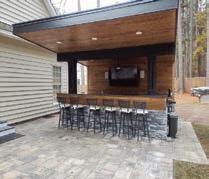









Scarlett
Christine
Maureen
Joy Blake Donat
Tracy Gibson
Keith Harris

Rachel Hernandez
Laurie Kornegay
Ross Laton
Christian McCarthy
Melody Bell McClelland
Meredith Morski
Lesley Dacko Pacos
Caitlin Richardson
Brenda Sharpe
Kate Shinkwin
Elizabeth Webster

I was once content with walking railroad tracks to school, stone walls to church, touching my toes to the sidewalk for balance, stepping over cracks that needed mending.
I balanced on city curbs, my arms extended like wings that would fly me to a nearby tree, a wild turkey perching safely on the lowest limb.
In school we balanced skinny legs on beams six inches off the floor to please Miss Brown, especially proud to do it backwards,
and I heard the story of Dayton’s Great Flood of 1913, how victims inched their escape across telephone wires from the railway station to Apple Street and safety.
Now I walk one tight rope after another, and wonder about people who tread on pavement with no cracks, no broken mothers’ backs, in sensible shoes, arms to their sides, with no inclination to fly.
— Marsha Warren Marsha Warren is a former director of the North Carolina Writers Network and the Paul Green Foundation.

By Jenna Biter
Push through the double front doors of Campbell House and you’ll find refuge from the dog days of summer boredom. The walls and halls and nooks and crannies of the home of the Arts Council of Moore County’s first floor galleries will be bursting with art, from ceilings to baseboards.
Cats and dogs will chase each other across canvases, children will laugh in watercolor, and painted flowers will forever be in bloom. The doors to the Fine Arts Festival at the Campbell House galleries, 482 E. Connecticut Ave., Southern Pines, are flung open wide beginning July 23. The only theme is art.
Proudly put on by the Arts Council since 1980, the annual exhibition gives amateur and professional artists alike a time and place to show and sell their work. “As long as it’s suitable for public viewing,” says Chris Dunn, the executive director of the host
Celebrating 45 years of the Fine Arts

organization, with a smile.
In its 45th year, the Fine Arts Festival fills the sprawling brick mansion with about 250 artworks each summer. Participants can submit one or two pieces. So long as a submission meets requirements — no bigger than this, no heavier than that, no older than two years, etc. — the art will make the show. “Anybody 16 and above,” says Kate Curtin, the Arts Council’s program and art gallery director.
Beyond that, the barrier to entry is a modest $20 or $30, depending on council membership. “I’ve enjoyed being part of this exhibit,” says Ellen Burke, a regular festival contributor. “And I love that my adult students participate in it.”
Burke is a retired arts educator who traded golden years in


New England for arts festivals on Connecticut Avenue. She lectures at the council, helps award arts scholarships, and sometimes instructs workshops en plein air watercolor painting. Somewhere in this year’s show, you might see her study of a garden in the dead of a Massachusetts winter or a simple watercolor of peas in a pod. Although Burke made the move south, residency isn’t required to participate in the festival. Submissions come from across the county, the state and beyond.
Wander through the White Gallery or the Brown Gallery and somewhere you’ll find a horse studying its reflection in a pond, a scene painted by Betsey MacDonald. She’s a science-turnedart teacher who’s entered the festival consistently over the past decade despite living in horse country — not of the Sandhills, but

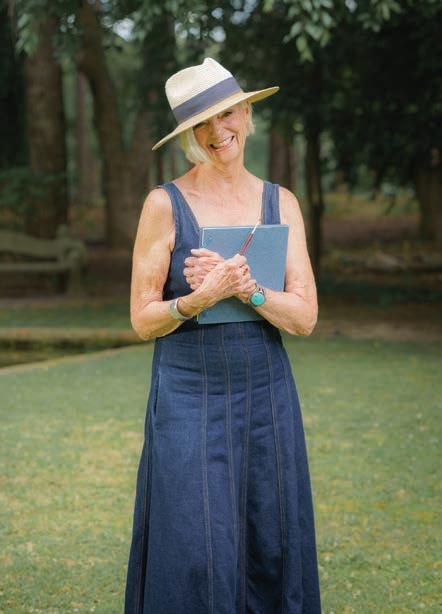
of Rhode Island. When a good friend packed up and moved to North Carolina, she connected MacDonald to the Arts Council.
“I was crushed, but we’ve remained friends, and she set up a show for me,” MacDonald says.
The Fine Arts Festival began as a way for local artists to improve their skills, and showcase and sell their work. That first year, the exhibition hung at the Weymouth Center for the Arts & Humanities, across the street from its current home in the Campbell House.
“I don’t know the timeline, but we eventually landed here. And this became our galleries,” says Dunn, gesturing to the rooms of the historic house around him.
An Army spouse, Jo Tomsick moved to Sanford during the COVID pandemic. She’s pressing toward a full-time career in gallery art and, during her time in North Carolina, she’s pressed hard. Tomsick held her first solo gallery show, “Of a Feather,” at Sandhills Community College in 2023 and ships her art to galleries across the United States. “I have a piece that’s actually in Tokyo right now,” says Tomsick, a glimmer in her eye.
Last year, she submitted an oil painting to the Fine Arts Festival, her interpretation of how the princess might have felt in
Hans Christian Andersen’s The Wild Swans. The painting won best in show and just sold a couple of months ago.
“I was mind-boggled,” Tomsick says. “People actually want the art that I make, which is so cool.”
Once all submissions have been delivered but before they have been hung, a judge looks everything over and selects winners. Since awards are assigned across a wide spectrum of seven categories spanning oil painting to photography, the judge must be a versatile veteran of the art industry and not locally connected. This way the art of the usual participants is unfamiliar, and submissions remain anonymous. Blake Kennedy, clay studio manager of N.C. State University’s Crafts Center, will shoulder the burden in 2025.
Every category has a first, second and third place award, each with a monetary prize, as well as an unlimited number of honorable mentions. Whether a piece wins or not, all the works hang throughout the Campbell House galleries, not necessarily by category but by what goes together, like, for example, a quiet set of blue florals entered by Paula Montgomery.
As many artists do, Montgomery started by copying masterpieces. She excelled at the practice and enjoyed it until someone


nudged her in the direction of developing her own style, one that’s grown into something bold, geometric and fun.
Ulli Misegades was similarly motivated. As a child, she was told by a teacher that she “had no gift.” It’s the very sort of comment that might turn the faces of art educators like Burke and MacDonald purple. Fortunately, the callous remark didn’t stop Misegades from picking up drawing and watercolor during sleepless nights when her children were young. Eventually, she led a portrait group in Cary, and her art has won awards and been published in newspapers and magazines like The Pastel Journal. “I love children and I love dogs,” says the grandmother of six. “Those are my favorite subjects, and that’s what I usually enter.”
After an exclusive preview night for businesses and individuals who commit to making purchases, there will be a public opening reception the first Friday in August, from 6 to 8 p.m. Typically, it’s standing room only, not by design but necessity; more than 300 people attended last year. The popular event will likely remain cozy until the Arts Council completes its capital campaign for a 1,700-square-foot gallery addition to Campbell House.
Guests will nibble and sip as they swirl about the exhibition, looking for winners and determining their own. At that point, the only medalists not known will be the Sara Wilson Hodgkins Best in Show — which is revealed during the evening’s awards ceremony — and the Lee Barrett People’s Choice, which will be tallied from paper slips after the exhibition ends August 27.
“It’s never been the same,” Dunn says about the two biggest accolades. “To this day, it’s never been the same.”
Jenna Biter is a writer and military wife in the Sandhills. She can be reached at jennabiter@protonmail.com.

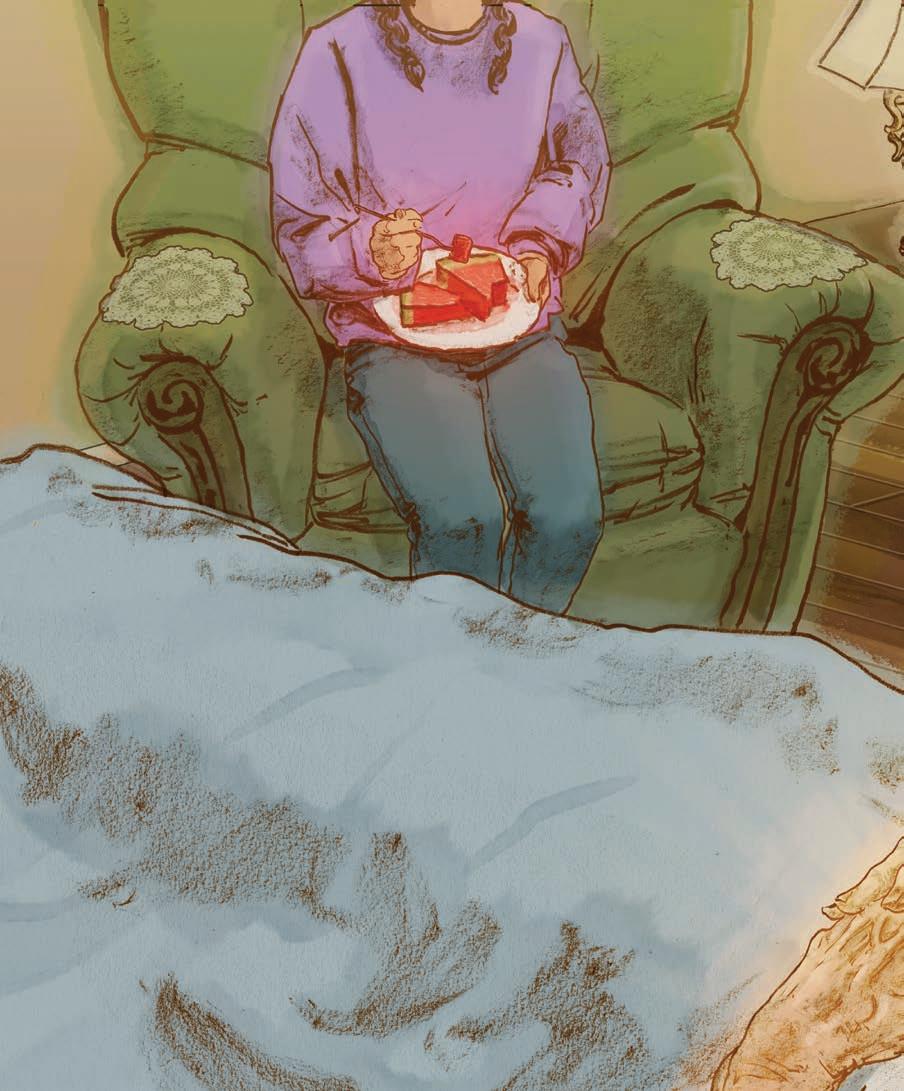
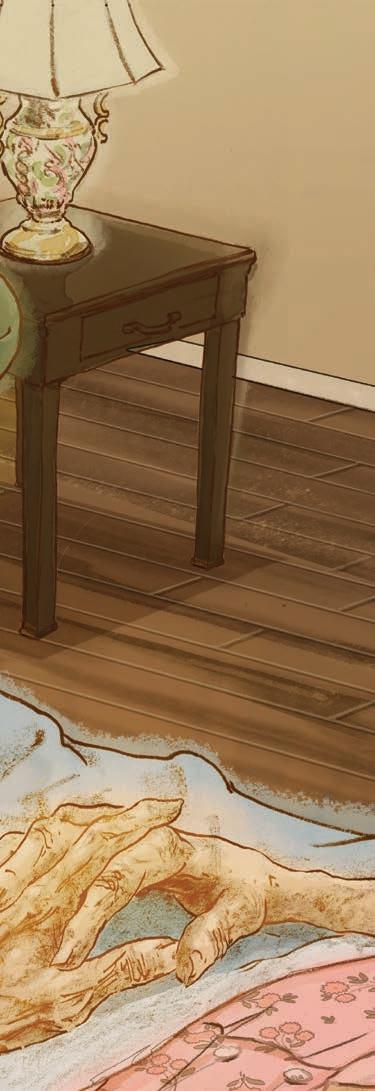

FiCtion

By
ClyDe eDgerton
illUstration By DaViD stanley
This happened a long time ago. I was seven years old.
Aunt Rosa raked off some seeds from the watermelon slice and then sliced the watermelon out of the rind and cut it up, removing some more seeds. This was back when watermelons had black seeds only. The big food companies, nowadays of course, have pretty much deleted any personality from fruits and vegetables.
I’d walked down to Aunt Rosa’s from my house because my grandma was sick in bed and I was told I needed to give her a visit and to do what Aunt Rosa told me to do.
Grandma lived with Aunt Rosa. “If she talks,” said Aunt Rosa, “she might talk a little out of her head. Sit in that green chair where she can see you with that watermelon. Just go on in there.”
I remember very little about the visit, but I do remember thinking that talking out of her head meant talking out of her nose and ears, and that scared me, as I recall.
My name is Flossie. I’m walking into the room where Grandma is sick and I have some watermelon in a plate and a fork and napkin. I know some things: I know Grandpa made coffins in his funeral home, and Grandma kept the books that were in a back room at his funeral home. And there was a fireplace in there, and Grandpa had some long black cars that carried dead people in the back. I could go in there until Grandpa died.
I’m in the room now. Grandpa’s first name was I.O. and that is printed on a long board in Aunt Rosa’s garage: “The I.O. Walker Funeral Home” and some other long words. They took it down and put it in there because Grandpa died, and Mr. Gibby took over.
I heard Daddy talking to Mr. Abernathy at the grocery store and they didn’t know I was listening, and Daddy said that Grandpa used to pull gold teeth out of dead people before he got caught. He said Grandpa made them into wedding rings and bracelets, and he made them into these money pieces like pennies and dimes that he said were a thousand years old and he said Grandpa put scratches in the money things and then rubbed in black ashes that had got wet and that made them look real, like they were from some country far away.
And Grandpa and some other people started a Mule Funeral Militia a long
time ago, too. They buried mules just like in a funeral because people loved mules more back then. They cut the head off a mule one time and buried that because of some reason. The mule was dead, though. But Grandpa just died not long ago and there was a big funeral for him, and now Grandma is down here sick at Aunt Rosa’s house. Mama told me I had to walk down here for a visit.
I take the watermelon on into the room where she is laying in a big bed, and there is that green chair beside her bed and she is under the covers and her head turns toward me on her pillow when Aunt Rosa says, “Mama, here’s Flossie,” and Grandma stares at me kind of hard. Her face is skinny. It used to be kind of fluffy and puffy. Her eyes have got these red lines under them and her hair is in these patches kind of. She seems real little. She won’t that little before she got sick. Mama told Mrs. Tally that Grandma was “wasted away,” but she hasn’t wasted away. She’s still there — right there in the big bed.
She says, “Hey there, Barbara.”
“This is Flossie,” says Aunt Rosa and now Aunt Rosa leaves and I’m a little bit afraid.
Grandma says, “Hey there, Flossie. I’m sorry, Honey. I get everybody mixed up. You come on and sit in that green chair. You are so pretty. Are you married yet?”
“No ma’am,” I say.
“That’s okay. You’ve still got some time. Can you eat some watermelon for me? I used to grow watermelons.”
“Yes, ma’am.” And I fork me some watermelon and take a bite.
It gets quiet. She is looking at me, smiling a little bit. Mama’d told me to talk to her, so I say, “Where’d you grow them?”
“In my garden,” she says. “Me and I. 0. always had the biggest garden you ever seen, but you stand up straight and you won’t have to go far before you can get married if the right beau comes along. Could you take another big bite?” and I do and she says, “Ain’t it good?” and I say, “Yes ma’am.”
I look through the door into the middle room to see if I can see Aunt Rosa, but she’s not in there.
“Would you go ahead and eat it all?” Grandma says, and she reaches up and puts her hand behind her head so that her head tilts up a little. Her arm has saggy skin. She’s looking right at me.
“It’s good, ain’t it?” she says.
“Yes ma’am,” I say.
“You’re the one likes cornbread so much, ain’t you?” she says.
“Yes ma’am.”
I keep eating the watermelon. It’s cold and crispy and sweet. I want to ask her about the gold teeth, but I don’t know if that was a sin, and I think I will not ask her, because I am a little bit afraid, but anyway I go ahead and say, “Did Grandpa pull gold teeth out of people’s mouths?” and she says, “Why, who told you that?” And I say, “Nobody,” and she says, “He’d use a set of needle nose pliers and pull ’em
out and find somebody down in Baldwin to make whatever you want out of that gold. A ring, a coin. ’Course they probably ain’t still over to Baldwin — fellow named Swanson. I.O. got that fella to make some mighty fine gold coins that looked like they come right out of Mexico, right out of that city of gold that that explorer looked for. Did you learn about that in school?”
“No ma’am.”
She rubs one of her eyes, then looks at me again. “Go ahead and take another bite,” she says.
I do.
***
I was probably fourteen when we were taking a trip to Florida — me, Mama, Daddy, and my little brothers when Mama told me about that visit with Grandma and the watermelon — and the meaning behind it all, the big story behind it all: Not long after Grandpa died, Grandma got real sick, and she told Dr. Gibson that on account of Grandpa being gone she didn’t want to live anymore, but she didn’t want to take any poison, so what would happen if she just went to bed and didn’t eat anything or drink anything like she’d heard about old Miss Cain doing back a long time ago? And Dr. Gibson told her she would likely live no more than a couple of weeks. So Grandma decided not to drink or eat so that she could die, and she went to bed at Aunt Rosa’s where she was living. She lived two weeks and one day. And then Mama said, “She loved to eat watermelon, so she asked Aunt Rosa to get one of her grandchildren down there in that green chair every day to eat some watermelon in front of her, so she could watch.”
I wish I could remember more about that visit. I only remember going into her bedroom and eating some watermelon in front of her, and it seemed to make her happy. PS


NBy James DoDson
ot long ago, during a breakfast talk in a retirement community about my forthcoming book on the Great Wagon Road, I was asked by a woman, “So, looking back, what would you say was the most surprising thing about your journey?”
“Everything,” I answered.
The audience laughed.
The first surprise, I explained, was that it took me more than half a century to find and follow America’s most fabled lost Colonial road that reportedly brought more than 100,000 European settlers to the Southern wilderness during the 18th century. As I point out in the book’s prologue, I first heard about the GWR from my father during a road trip with my older brother in December 1966 to shoot mistletoe out of the ancient white oaks that grew around his great-grandfather’s long-abandoned homeplace off Buckhorn Road, near the Colonial-era town of Hillsborough.
The first of many surprises was the discovery that my father’s grandmother, a natural healer along Buckhorn Road named Emma Tate Dodson, was possibly an American Indian who had been rescued and adopted as an infant by George Washington Tate, my double-great-grandfather, on one of his “Gospel” rides to establish a Methodist church in the western counties of the state.
A second surprise came during the drive home when the old man pulled over by the Haw River to show my brother and me a set of stones submerged in the shallows of the river — purportedly the remains of G.W. Tate’s historic gristmill and furniture shop.
“Boys, long ago, that was your great-great-granddaddy’s gristmill, an important stop on the Great Trading Path that connected to the Great Philadelphia Wagon Road that brought tens of thousands of European settlers to the South in the 18th century,
including your Scottish, German and English ancestors.”
This was pure catnip to my lively eighth-grade mind. Owing to a father whose passion for the outdoors was only matched by his love of American history, my brother and I were seasoned explorers of historic Revolutionary and Civil War battlefields.
“Can we go find it?” I said to him.
He smiled. “How about this, Sport. Someday I’ll give you the keys to the Roadmaster, and you can go find the Wagon Road.”
I searched for years but found only the brief occasional mention of the Great Wagon Road in several histories of the South, but nothing about where it ran and what happened along it. The road seemed truly lost to time.
Forty years later, however, the Great Wagon Road found me.
On my first day as writer-in-residence at Hollins University in Virginia in 2006, I took a spin up historic U.S. Highway 11 — the famed Lee-Jackson Highway — and was surprised to come upon a historic roadside marker describing the “Old Carolina Road” that was part of the 18th century’s “Great Philadelphia Wagon Road.”
The sweet hand of providence was clearly at work, for the next day, while browsing shelves at a used bookshop in the Roanoke City Market, I found a well-worn copy of a folksy history called The Great Wagon Road: From Philadelphia to the South, by Williamsburg historian Parke Rouse, Jr. I purchased the book (originally published in 1973 and long out of print) and read it in one night, taking notes. I also attempted to track down author Parke Rouse Jr. but discovered he’d been deceased for many years.
Still, the cosmos had cracked open a door, and I began collecting and reading all or parts of every history of America’s Colonial era that I could lay hands on for the next decade, eventually building a personal library of more than 75 books. About that same time, I purchased a 1994 Buick Roadmaster Estate station wagon from an elderly man in Pinehurst, almost identical to the one owned by my late father in the mid-1960s. Pinehurst pals playfully nicknamed it “The Pearl,” which turned out to be among the last true “wagons” built by Detroit before they switched to making SUVs.
I suddenly had my very own wagon. Now all I had to do was find the most traveled road of Colonial America to travel in it.
Eight years later, thanks to the late North Carolina historian Charles Rodenbough and other history-minded folks, I discovered that I wasn’t alone in my quest — that, in fact, a small army of state archivists and local historians, genealogists, “lost road” experts, various museum curators and ordinary history nuts like me had finally cracked the code on the road’s original path from Philly to Georgia.
By the spring of 2017, I and my traveling pal, Mulligan the dog, were ready to roll when another big surprise — an exploding gallbladder and a baby carrot-sized tumor in my gut — required surgery and a four-month recovery.
Finally, on a steamy late August night, I began my journey (minus Mully, alas, owing to her age and one of the hottest summers on record) at Philadelphia’s historic City Tavern, which claims to be the birthplace of American cuisine. As I enjoyed a pint of Ben Franklin’s own
spruce beer recipe and nibbled on cinnamon and pecan biscuits from Thomas Jefferson’s own Monticello cookbook, I eavesdropped like a tavern spy from Robert Louis Stevenson on three couples having a rowdy celebration of matrimony and a game of trivia based on American history that kept going off the rails.
At one point, a young woman called out a question in clear frustration: “Where and what year were the Articles of Confederation, the nation’s first constitution, adopted?”
None of her mates answered.
So, I did. “I believe it was York, Pennsylvania, in November 1777.”
Her name was Gina. She gave me a beaming smile and scooted her chair close to mine. “Correct! How did you know that?”
“Because it happened on the Great Wagon Road.”
What ensued was a delightful conversation about a frontier road that shaped the character and commerce of early America, the historic Colonial road that opened the Southern wilderness and became the nation’s first immigrant highway — the “road that made America,” as my friend Tom Sears, an Old Salem expert on Colonial architecture, described it to me.
Gina was thrilled to learn about it and apologized that she’d never heard its name.
I assured her that she wasn’t alone. Most Americans living today have never heard its name spoken, yet it’s believed that one-fourth of all Americans can trace their ancestral roots to the Great Wagon Road in one way or another.
Charmed and fascinated, Gina wondered how long it would take me to travel the road from Philly to Augusta, Georgia.
I mentioned that settlers took anywhere from two months to several years to reach their destinations depending on the weather and unknown factors like disease, getting lost or encountering hostile native peoples or wild animals.
“I plan to travel the entire road in three or four weeks,” I said. “I’ve spent years researching it.”
Silly me. God laughs, to paraphrase the ancient proverb, when men make plans.
Athird big surprise came at the end of my third week on the road. I hadn’t even gotten out of Pennsylvania.
On the plus side, I’d met and interviewed so many fascinating people who were passionate keepers of their own Wagon Road stories, I realized I’d just tapped the surface of the trail’s saga.
Instead of writing an updated history of the Great Wagon Road, as originally planned, I borrowed a strategy from my late hero Studs Terkel and decided that the real story of the Wagon Road lay in the voices of the people living along it today, keeping its stories alive — the flamekeepers, if you will, of the “road that made America.” If it took a full year to complete my travels, so be it.
Instead, subtracting 12 months for COVID, it took six years and counting.
My focus on the storytellers proved to be deeply rewarding,
introducing me to a broad array of Americans from every walk of life and political persuasion whose vivid and often untold tales about the development of a winding and once forgotten Colonial road (originally an American Indian hunting path that stretched from Pennsylvania to the Carolinas) carried our ancestors into the Golden West and shaped the America we know today, hence the book’s main title: The Road That Made America. Unexpectedly, their voices and stories ultimately restored my faith in a country where democracy — and civic discourse — was supposedly in short supply.
Looking back, this was the nicest surprise of all. For what began simply as an armchair historian’s quest to find and document America’s most famous lost road ended as nothing less than a powerful, emotional pilgrimage for me.
At the journey’s end, while I was heading home through the winter moonlight on a winding highway believed to be the path Lord Cornwallis took while chasing wily Nathanael Greene to the Dan River, I had a final revelation of the road’s impact on me: . . . a true pilgrimage is said to be one in which the traveler
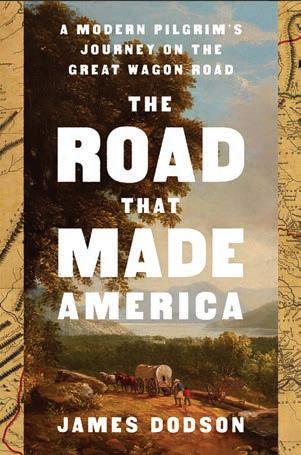

ultimately learns more about himself than the passing landscape. Perhaps this is true. But for the time being, it’s enough to think about some of the inspiring people and stories that gave me hope in a nation where democracy is said to be hanging by a thread: an old Ben Franklin and a young Daniel Boone, the Susquehanna Muse, real Yorkers, the candlelight of Antietam, a Gettysburg living legend, an awakening at Belle Grove Plantation, Liberty Man, the passion of Adeela Al-Khalili, good old cousin Steve, a lost Confederate found, a snowy birthday in Staunton, and final road trips with Mully.
Without question, my life and appreciation of my country have both been enriched by the people and stories of the Great Wagon Road. This was the nicest surprise of all. PS
Jim Dodson’s 17th book, The Road That Made America: A Modern Pilgrim Travels the Great Wagon Road, was published by Avid Reader Press and is available in local bookstores and through Amazon. His columns and weekly writings can be found at jwdauthor. substrack.com.
Turned out in an elegant black morning coat, looking every bit the nineteenth-century gentleman of leisure, Wheatland tour guide Bob Thee greets us with a slight bow at the kitchen door of James Buchanan’s stately Lancaster mansion.
There are only three of us for the first tour of the day of the house and the grounds on North President Avenue it shares with LancasterHistory, the Red Rose City’s historical society. My tour companions are a cheerful apple-cheeked couple from Minneapolis in town for their oldest grandchild’s soccer tournament. Unlike me, something of a presidential geek, neither Heidi Thurman nor her husband, Ralph, are particularly keen on the homes of dead presidents and confess little desire to learn about arguably America’s most inept president.
“To tell the truth, dear, we just needed a break from teenage soccer drama and too much fast food,” Heidi confides with a cheery Minnesota whisper as Bob Thee waits solemnly by the kitchen door for any last-minute arrivals. “Also, we love antiques. My daughter, Lucy, told us that Wheatlands has loads of really nice ones. After this we’re checking out the big farmers market downtown. Ralph wants some genuine Amish bologna. How ’bout you, dear?”
I also dig genuine Amish bologna and plan to make my own stop at Lancaster’s historic Central Market, which sits just off the Wagon Road, but first on my agenda is to learn about the private life of maybe the most peculiar peacock to ever occupy the White House.
This is an excerpt from The Road That Made America.
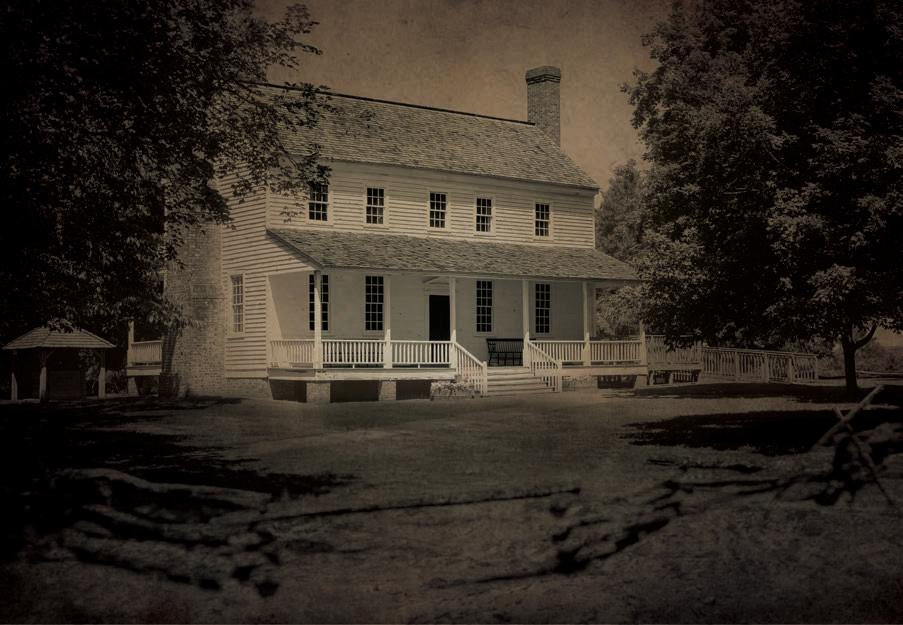
he skirmish at Col. Philip Alston’s home had raged for over three hours without any definitive result. But when an oxcart was discovered in Alston’s barnyard, an end to the stalemate appeared to be at hand. The leader of the attacking Loyalist Militia, 26-year-old Col. David Fanning, ordered his men to bed the cart with hay, set it afire, and wheel it ablaze into the two-story frame house. Col. Alston, inside with wife, Temperance, their six children, and around twenty Patriots under his command, recognized this dilemma had no ready solution. If he and his militia members ventured outside, they would be sitting ducks for Fanning’s sharpshooters. Staying inside a burning tinderbox meant certain death for all.
Fanning and Alston had taken turns chasing each other through the Sandhills during the month of July, 1781. Now Fanning was the pursuer and Alston was his prey. The news that Alston’s forces had killed non-fighting Loyalist supporter Kenneth Black had sent the irascible Fanning over the edge, and revenge was foremost on his mind. When Fanning found out the Patriot leader and a number of his men had retreated to Alston’s “House in the Horseshoe” (so named because of its location within a bend of the Deep River) 10 miles north of Carthage, he resolved “to make [an] [e]xample of them for [what] . . . they had done to one of my pilots by name Kenneth Black.”
Alston, Fanning and Black: The convergence of this trio in July 1781 yielded compelling though oft-overlooked Revolutionary War history. Local history buff Paula Caddell finds the contrasts in the backgrounds of the three protagonists fascinating. “Philip Alston was born with a silver spoon in his mouth as the privileged son of a plantation owner. David Fanning was something of an abused child indentured to a man who forced David to live mostly outdoors in the woods attending cattle. This neglect caused an unsightly condition known as ‘scald head,’ which permanently took all the hair off Fanning’s head. Kenneth Black, a Scottish Highlander, emigrated here from Jura, an isle in the Hebrides, seeking a better life.”
Black was among thousands of Highlanders impacted by the defeat of Bonnie Prince Charlie’s Jacobite Army at the Battle of Culloden in 1746. To punish the rebels, the crown disbanded the centuries-old Scottish clan system. Many were driven off their land. Those remaining were forced to pay exorbitant rents. Facing starvation, a large proportion of Highlanders sought a fresh start in America. And the king, desirous of encouraging settlement in the colonies, was willing to pardon past offenses and permit the Highlanders to leave provided they pledged an oath of allegiance vowing never to take up arms against the sovereign. Those signing acknowledged that breach of the oath would cause them to be “cursed in all . . . [their] undertakings and family.” Abiding by the oath was considered a religious necessity. In his 1854 treatise, “The Old North State in 1776,” Rev. Eli Caruthers remarked that most Scots’ mindset was that “they must not violate their oath, for that would be giving themselves to the devil at once.”
The trickle of Scots immigrating to this region was accelerating rapidly when Kenneth Black arrived sometime around 1765. He and wife Catherine settled on a 100-acre allotment near the Little
River just south of Carthage. Sometime after 1772, he acquired a 50-acre plot near present-day Southern Pines and constructed a home where the Residence Inn is now located. Residing nearby were several brothers with the surname of Black who likewise migrated from Jura. There is disagreement among historians regarding the relationship of the brothers to Kenneth, but they were certainly kin in some way and good friends. Other Scottish- born families like McNeill, Buchan, Paterson, Buie, Blue and Stewart soon arrived in the area. Descendants of these families still populate Moore County today.
he most celebrated arrival was undoubtedly Flora MacDonald. She achieved everlasting fame after the Culloden debacle, when she aided Bonnie Prince Charlie’s escape to the Island of Skye by disguising him as an Irish spinning maid. She paid for her assistance to the Jacobite cause with imprisonment in the Tower of London for several months. In 1750, she married Allan MacDonald, ironically a captain in the British Army. They lived on Skye until emigrating to North Carolina in 1774.
The Highland Scots destined for North Carolina assumed they were leaving behind a civil war that had rendered their lives unbearably difficult. It must have been alarming to arrive here to find rebellion in their midst once again. They wanted no part of it. Aside from their irrevocable oaths to King George III, other practicalities mitigated against supporting the cause of independence. England had easily crushed the Jacobites at Culloden. What would prevent the greatest military power on Earth from quelling an American rebellion? There was commerce to consider too. Many of the Scots, like Kenneth Black, had become successful farmers. The longleaf pines on their estates produced naval stores of pitch and turpentine marketed to the mother country. And there was cotton. War would interrupt that trade. Why rock the boat?
Once the “Shot Heard Round the World” was fired in Lexington on April 19, 1775, war was suddenly at hand. One month later, patriots (also known then as Whigs) in the Charlotte area adopted the Mecklenburg Declaration, which is said to be the first formal action by any group of Americans to declare independence from Great Britain. When word reached Royal Gov. Josiah Martin that the Whigs’ Safety Committee in New Bern was poised to seize him, he fled the Royal Palace and took refuge in a British ship offshore. With astonishing alacrity, the Whigs orchestrated a takeover of the reins of government.
In August 1775, a convocation of Whigs was held at the “Hillsborough Provincial Congress.” This assembly took up the question of raising troops to defend the colony against an anticipated British invasion. Two regiments were authorized (known as the “Continental Line”) , but lack of funding meant that the majority of Patriot fighters during the war were militia members.
While those favoring independence in North Carolina were in the majority, the Highland Scots provided a formidable counterweight favoring allegiance to the king. They were joined by remnants of the Regulators movement. The Regulators were western
North Carolina settlers who had rebelled against the fraudulent imposition of fees and taxes by conniving public officials. This brouhaha had led to the Battle of Alamance in 1771 — a devastating defeat for the Regulators. The movement collapsed, and its surviving members were forced to swear their own oaths of allegiance to the king.
In the early stages of the Revolution, the Whigs sought to lure the Highland Scots and Regulators (collectively referred to as “Tories”) to the revolutionary cause with various inducements. But when those offers were rejected, the Whigs resorted to coercion in the form of arrests, banishments, estate confiscations and tax penalties. Seeking to restore royal rule, the embattled Gov. Martin made his own overtures to recruit the Highlanders to join the Royal Highland Emigrant Regiment (“the Highland Regiment”), promising 200-acre grants to all who enlisted. Martin, not above threatening reprisals against recalcitrant Scots, proclaimed those refusing service risked having “their lives and properties to be forfeited.”
Martin’s recruitment efforts met with some success. On February 2, 1776, 1500 Highlanders and a smaller number of Regulators gathered at Cross Creek near Fayetteville to join the Highland Regiment led by Gen. Donald MacDonald. Flora MacDonald’s husband, Allan, served as an officer in the Regiment. Flora herself is said to have made a fiery oration urging valor in upcoming battles to her fellow Highlanders. The plan was to march the Highland Regiment to Wilmington to link up with British forces led by Gen. Lord Charles Cornwallis, who was scheduled to be arriving shortly by sea. But Patriots led by Col. James Moore and Richard Caswell rushed to block the Regiment at Moore’s Creek, eighteen miles north of Wilmington. Realizing that the Regiment would be crossing Moore’s Creek Bridge, Moore and Caswell removed most of the bridge’s planking, greased its support rails with tallow, and awaited the Regiment’s appearance. When the Highlanders arrived and attempted a charge across the bridge, they were welcomed with deadly cannon and rifle fire.
It was a rout. Fifty Scots perished on the bridge, and the majority of the Regiment was captured and imprisoned. Allan MacDonald was among them. Those that escaped hastened back to their farms and laid low. When Cornwallis finally arrived in Wilmington in May 1776, there were no Highlanders to greet him, only a chagrined Gov. Martin, whose foolproof plan to take back North Carolina had backfired. With no fighting Tories around to augment his own army, Cornwallis chose to sail for Charleston with the intent of attacking the Patriot stronghold of Fort Moultrie. With the Tories in disarray, armed resistance to the Patriots in North Carolina melted away. In short order, the Whigs cemented their hold on government by adopting a new constitution, electing Richard Caswell as governor of the new state, and levying property taxes.
While there was a hiatus on military engagements in the state, the Highlanders’ troubles continued. Flora MacDonald’s home at Cheek’s Creek was ransacked and seized. Poor Flora! Once again, she had cast her lot with the losing side. Now age 54,
homeless, separated from her husband, and a pariah, she appealed to Kenneth Black for help. He allowed Flora to hide at his Little River property, where she remained until reuniting with Allan after his release in a prisoner exchange. In 1779, the couple left America and returned to Skye.
Kenneth Black himself ran afoul of the four-fold tax that the authorities imposed on those who refused to take an oath to the new state. This led to an altercation reported by Caruthers in his treatise. In the fall of 1778, an unintimidated Black rebuffed the efforts of two tax collectors for the county who came to his home.
black, like a true loyalist, refused to pay, and said that the taxes belonged to the king.
"
Subsequently the taxmen brought in reinforcements, who promptly seized “a negro man, a stud horse, and a good deal of other property, amounting in all to seven or eight hundred dollars.” Black offered no resistance. Caruthers offered the view that given the rough treatment afforded Black, “a man in good circumstances, and of much respectability in his neighborhood . . . we may suppose it was worse with men of less property and influence in the community. During this period the Scots complained bitterly of such military officers as [Philip] Alston [and others] . . . for carrying away their bacon, grain, and stock of every description, professedly for the American army, but without making compensation, or even giving a certificate, and thus leaving their families in a destitute and suffering condition.”
Labeled by local historian Rassie Wicker as a “swashbuckling, aristocratic rascal,” Philip Alston wore many hats during the Revolutionary years: tax assessor, justice of the peace, and member of the legislature. And he was certainly a man of means. His wife, Temperance Smith, came from a wealthy family. Alston’s land holdings — mostly in the Deep River area, and including the House in the Horseshoe, totaled nearly 7,000 acres, and he owned slaves. But Alston sensed that the best way to further his emerging political career would be to lead his men into battle. Eager to join the revolutionary fray, he sufficiently impressed his Patriot superiors to be named First Major of the Cumberland County Militia. But after heading south, his regiment was mauled in the Battle of Briar Creek, Georgia, a stinging defeat for the Patriots. Alston was taken prisoner, but later escaped. As he made his way back to North Carolina, Cornwallis’ army was finally gaining a solid foothold in the South, having overrun Savannah and Charleston by May 1780. Moreover, British Maj.
James Craig successfully occupied Wilmington in January 1781, so Cornwallis now had available a North Carolina sea coast supply base and garrison.
With Patriot prospects in the South on the downslide, Gen. Horatio Gates, the victorious American leader at the Battle of Saratoga, was placed at the helm of the Patriots’ “Southern Department.” But Gates suffered a humiliating defeat after marching his troops, including 1,200 North Carolinians, into the jaws of a surprise attack by Cornwallis at Camden, South Carolina.
Gates’s failure at Camden caused George Washington to replace him with Gen. Nathaniel Greene. Intent on demolishing the new leader’s troops, Cornwallis re-entered North Carolina and pursued Greene northward through the Piedmont. In the process of fording a stream, Cornwallis’s troops discovered that Greene had dumped tar in the stream’s bed to hinder the British crossing — one of a couple derivatives for the nickname “the Tar Heel State.” The adversaries met in battle on March 15, 1781, at Guilford Court House near Greensboro. While the engagement was declared a British victory, it was a Pyrrhic one. The heavy casualties on both sides hurt Cornwallis far more than Greene. With his army depleted and running low on supplies, a frustrated Cornwallis abandoned his pursuit of Greene and marched to Wilmington for refitting. He then departed that city with his army for Virginia on April 25.
While Cornwallis’ forays into North Carolina failed to subdue the Patriots, his presence nonetheless reignited Tory resistance. Young David Fanning emerged as a resourceful and ferocious leader of guerrilla-fighting Tories who terrorized the countryside in 1781. Much had happened to Fanning in his 10 years since leaving home at age 16 to escape the cruel treatment he endured as a child. After a period of wandering, he was rescued in Orange County by the O’Deniell family. The O’Deniells restored Fanning to health and cured him of the “tetter worm” disease that had caused the loss of his hair. They taught him to read and write. At age 19, Fanning settled in South Carolina, and traded with the Catawba Indians. When the Revolution came, Fanning favored the Whigs’ cause. However, according to Caruthers, everything changed when, “. . . on his return from one of his trading expeditions, he was met by a little party of lawless fellows who declared themselves Whigs, and robbed him of everything he had . . . [H]e at once changed sides and in the impetuosity and violence of his temper swore vengeance on the whole of the Whig party.” He then joined a Tory group of militants in South Carolina, until returning to North Carolina in tandem with Cornwallis’s army in early 1781.
Though not receiving any formal command from the British, Fanning nonetheless became a feared foe of the Patriots. Caruthers reports, “He was often upon his enemies when they were least expecting it, and having accomplished his purpose of death or devastation, he was gone before their friends could rally. Often when supposed to be at a distance, the storm of his presence in a neighborhood was communicated by the smoke of burning houses, and by the cries of frightened and flying women and children.”
hile both Patriot militia and Tory guerrillas committed atrocities during the conflict, one incident really inflamed passions on both sides, and it stemmed from a seemingly inconsequential event. A member of a Patriot militia led by Col. Thomas Wade stole a poor servant girl’s piece of cloth. Her ensuing complaint was communicated to Tories who discovered that Wade was camped nearby at Piney Bottom Creek, where Fort Bragg is today. The Tory band launched a surprise attack on Wade before daybreak, quickly killing six of his men. A young camp-following boy who was a favorite of Wade begged for his life only to have an attacker split the boy’s skull in two with a swipe of the sword.
The massacre sent the Patriot militia into a paroxysm of rage. Retributions against the Tories increased dramatically. One retaliatory raid by Wade and company targeted Kenneth Black. Wade’s men rode horses into Black’s house and gathered 51-year-old Black and his family into the chimney. Wade intended burning the house, but decided to search it first. After finding two chests belonging to British army officers who had left the chests with Black, the militiamen broke them open and dumped the contents on the floor. By unhappy coincidence, two daughters of Flora MacDonald arrived to visit the Blacks out of concern for a bout of smallpox the family had endured and weathered. According to Caruthers, the militiamen “took the gold rings from their [the MacDonald daughters] fingers and the silk handkerchiefs from their necks; then putting their swords into their bosom, split down their silk dresses and, taking them into the yard, stripped them of all their outer clothing.”
Wade’s men were preparing to leave with their plunder when Catherine Black exclaimed, “Well, you have a bad companion with you!” When the men apprehended she meant smallpox exposure, they immediately threw down their booty. Wade and his men took old Kenneth along to guide them out of the area. But “probably thinking that there might be danger of getting the smallpox from him, they told him he might return home.” A gunshot fired with bad intentions whizzed by Black’s head as he departed his captors to return to his devastated family. His fellow friends from Jura were not so fortunate. Wade’s men killed Alexander Black and Archibald Black was badly injured. Thus, Kenneth Black, though not himself a fighting man, nevertheless had a score to settle with the Patriots.
Of course, violence begets violence, and David Fanning had no inclination to be gentle with Patriots he encountered. The British commander in Wilmington, pleased with Fanning’s success in engendering panic and dread among the Patriots, appointed him colonel of the Loyalist Militia on July 5, 1781. Proud of his new status, the vainglorious Fanning donned the British army redcoat, and looked for a bold strike that would further impress his superiors. He found it at the Chatham County Courthouse in Pittsboro. Caruthers recounts that on July 16 or 17, Fanning and about 35 men “. . . dashed into Pittsboro when the county court was in session . . . and captured the lawyers, justices and other officers of the court, with such of the citizens and prominent men
in the place as he wanted . . . [H]e swore the rebels should never hold court there again.” Fanning then proceeded to transport 14 of the captured to Wilmington, where Maj. Craig had erected a stockade prison.
While en route to Wilmington with his prisoners, Fanning stopped for the night (probably July 20) at Kenneth Black’s farm. Fanning probably was unaware when feasting at Black’s that Philip Alston, newly appointed to colonel in the militia, was trailing him in hot pursuit less than a day behind. After breakfast the following morning, Fanning resumed his journey to Wilmington. Kenneth Black accompanied Fanning’s band for a few miles “as a pilot.” But after the ride began, Fanning’s horse, Red Doe, a celebrated and normally lightning-fast steed, became lame. Fanning and Black swapped their rides. Black said his goodbyes and — astride his friend’s lame horse — turned back toward home.
Unfortunately for Black, his path home ran smack into the pursuing Alston at Ray’s Mill Creek, where Southern Pines Golf Club is now located. According to Caruthers, “As soon as he [Black] saw them he turned up the creek and attempted to escape on Fanning’s foundered horse. They discovered and pursued him, shot and wounded him; but he went on some two hundred yards further, into the edge of the swamp, and then fell with his face on the ground. When they came up they smashed his head with the butt of his gun, and when begging for his life [killed him].”
Alston ultimately abandoned his chase of Fanning and retreated north toward the Deep River. When passing by the Black homestead, Alston called on Catherine Black and “expressed much regret” that his men had killed her husband.
fter Fanning dropped off his prisoners in Wilmington, he headed back the way he came. While en route to his headquarters at Coxes Mill, he stopped by the Blacks’ farmstead, where Catherine Black informed him of her husband’s death. Enraged, Fanning headed for the House in the Horseshoe to seek revenge. On the way, he learned Alston’s militia “had separated into small parties thinking I should never return from Wilmington.” Fanning wrote that he and his men “marched all that day and that night following and just as the day [sometime from July 29 to August 5 — accounts differ] [d]awned commenced firing on Alston and his reduced force.”
jumping a rail fence, “a rifle ball entered his head and he fell dead on the spot.” Those following McKay retreated back behind the fence. Fanning then “bribed a free negro to set the house on fire at the far side where it was supposed he could do it without being observed.” However, Alston got wise to the scheme and shot the man as he was about to torch the house.
By noon, “one or two had been killed in the house and four or five wounded; but Fanning’s loss in killed and wounded was more than double.” It was then that Fanning conjured up his end-game strategy of propelling the fire-laden oxcart into the house. “In this perilous and critical moment, Mrs. Alston came out of her bedroom . . . and with perfect composure, requested them to commit the business to her.” Temperance volunteered to venture outside with a raised white flag. All the men, and Alston particularly, objected. They thought it “very improbable that Fanning, under all the circumstances, would respect even a lady of her standing.” But Temperance would not be denied, and she courageously walked out on the step. Rather than shoot down the unarmed woman, Fanning “called to her to meet him half-way, which she did.” Then Temperance calmly announced her message: “We will surrender, sir, on condition that no one shall be injured; otherwise we will make the best defense we can; and if need be, sell our lives as dearly as possible.”

Fanning agreed to her proposal, provided that Alston and his men agreed firstly not to venture more than five miles from their homes for the duration of hostilities, and secondly to swear oaths not to take up arms against the king or “cause anything to do or be done prejudicial to the success of His Majesty.” The terms were agreed upon and the lengthy skirmish was over. It appears that Alston and his men abided by their oaths throughout the rest of the war.
As musket balls smashed through the windows, Temperance Alston protected her two smallest children “by putting a small table . . . in the fireplace, for them to stand on, and thus they were entirely beyond the reach of the bullets.” Temperance, clutching her 6-month-old daughter, scurried beneath her bed for protection. Alston’s two teenage sons probably were among the defenders returning fire. Caruthers reported that there was “among the assailants, a lieutenant from the British army by the name of McKay . . . and he told Fanning that if he would give him [McKay] the command he would take the house in a few minutes.” Fanning consented, and McKay promptly led a “pell-mell” rush toward the house. But as soon as McKay started his charge by
Thereafter, Fanning continued his guerrilla raids. His most spectacular maneuver involved capturing Gov. Thomas Burke and 200 other Patriots in Hillsborough on September 12. While en route to Wilmington to incarcerate his prisoners, Fanning was attacked by Patriots at Lindley’s Mill. Numerous dead and wounded resulted on both sides. But Fanning succeeded in delivering Gov. Burke to Maj. Craig for imprisonment.
While Fanning was terrorizing North Carolina as the bloody summer of 1781 came to a close, Gen. Cornwallis found himself check-mated in Yorktown, Virginia. Surrounded by American and French armies, and the French navy preventing his rescue by sea, Cornwallis surrendered to Gen. George Washington on October 19, 1781, and the British began vanishing from the South. Maj. Craig evacuated Wilmington on November 18. For a time, Fanning continued his reign of terror, but he too ultimately fled Wilmington for Charleston — still holding on as a British bastion
— in May 1782. But then that city was abandoned by the English on December 14 and Fanning, along with his new 16-year-old bride departed as well. He ultimately settled in New Brunswick — a haven for exiled Loyalists.
The end of the war still left unresolved what the state should do with the Tories and their confiscated property. The Black farm apparently escaped seizure as wife Catherine resided there for many years after Kenneth’s death. In 1783, the state legislature passed a measure pardoning all Tories and permitting some restoration of confiscated properties. There were three named exceptions to the pardon, one of whom was David Fanning.
Both Alston and Fanning led controversial lives after the war. After the southern half of Cumberland County became Moore County in 1784, Alston held various positions in county government. But he made political enemies, and they sought to eliminate him as a foe by causing his indictment for murder arising out of the aforementioned killing of Thomas Taylor when Alston was trailing Fanning in July 1781. Alston ultimately received a pardon for this offense, but other scrapes followed.
George Glascock, Alston’s principal political nemesis, was murdered in 1787. Alston’s slave Dave was accused of the crime. Alston, who was hosting a party at the time of the murder, was charged as an accessory. Records of the disposition of the charges are sketchy, but it appears that Alston was confined for a time, but later escaped to Georgia, where he owned property. In 1791, he was assassinated by an unknown killer.
Fanning faced his own charge of criminal conduct while in New Brunswick. In 1800, he was convicted of the rape of a neighbor’s young daughter. Fanning received the death sentence but managed to avoid this punishment by receiving a pardon through appeal. The pardon was conditioned on Fanning’s exile from the province, so he sailed to Nova Scotia, where he enjoyed success in shipbuilding until his death in 1825.
The Moore County Historical Association (MCHA) was involved in efforts to preserve the graveyard of Kenneth Black and family, located between Hwy. 15-501 and Morganton Road across from the Target shopping center in Southern Pines. For decades, the unmaintained graveyard was forgotten as vandals decimated gravestones and rock walls collapsed.
In the 1960s, Tony Parker, a local history writer and devotee of ancient graveyards, rediscovered the Black family burial ground. Black descendants and brothers Bill and Nolan Moran got local media interested in the site and convinced a local bank to place a new marker over Kenneth’s grave.
Over a decade ago, the Moran family requested that MCHA serve as an agent to oversee the cemetery. MCHA’s volunteers sprang into action to restore the burial ground by unearthing buried stones and rebuilding a fallen wall. Money was raised to pay for ground-penetrating radar to identify the specific locations of all 34 graves in the cemetery to ensure their nondisturbance. Impressed by MCHA’s restoration efforts, Vince Viscomi, the Tennessee physician who owned the property at the time, made known his desire that any development of the property would preserve and protect this historic burial ground.
Had Kenneth Black sided with the Patriots and been killed by the British under similar circumstances, he likely would be remembered as a martyr and hero of the Revolution.
John Brown of Roanoke, Virginia, another Black descendant who succeeded the Morans as a family representative for the cemetery, agreed. Though his ancestor was not on the winning side, preserving the story of his role in the Revolution is important.
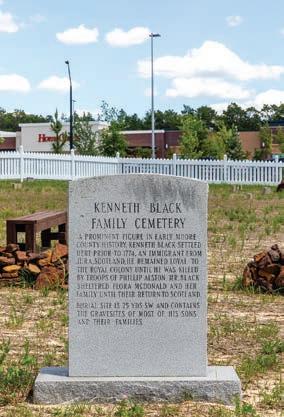
“The work by MCHA and the Black family descendants to maintain the cemetery shows that people sill care about history. Today, too many people don’t care,” Brown said. In 2020 a development plan by Mid-Atlantic Properties for the 100-acre site that included the cemetery was approved contingent on the cemetery’s preservation. According to MCHA, “GPS recordings of the gravestones and rock walls were recorded and then the objects placed in storage. Approximately 17 feet of soil was then placed over the cemetery as part of the grading process. The stones were then returned to the GPS recorded locations. A sturdy white picket fence was erected around the cemetery, and a pair of brick columns were constructed to mark two entrances of paved walkways to the cemetery.”
MCHA also helped preserve the House in the Horseshoe itself by acquiring it in the 1950s from a private owner and restoring the house to close to its original condition. MCHA subsequently conveyed the property to the state of North Carolina. The state’s Department of Natural and Cultural Resources welcomes thousands of visitors annually who examine numerous bullet holes still visible from the desperate fight that took place 244 years ago. The site’s low-key operation, coupled with its splendid, isolated setting, do much to help a visitor visualize the time when a courageous woman emerged from the House in the Horseshoe to confront hostile attackers long ago. PS
This story first appeared in July, 2016 and has been updated. The reenactment of the skirmish at House in the Horseshoe, 288 Alston House Road, Sanford takes place on July 26. The day’s demonstrations and activities begin at 10 a.m. and conclude at 4 p.m. The battle reenactment will take place at 2 p.m. Parking for the event is $5.

By DeBorah salomon
Photogra Phs By John gessner
Pinehurst has become an enclave of castles and cottages, outdoor showers and indoor pools, antiques and art, dog grooming parlors and tech control rooms accommodating generals and musicians, bankers, brewers, judges and surgeons. From this residential potpourri a new genre emerges: the little gem.
A prime example is the cottage tucked into a quiet, lesser known lane on the edge of a newish residential area. Pinehurst estates have garages bigger than its 820 square feet.
This little gem presents an optical illusion: classic furniture in dark woods is scaled for a larger house but sits comfortably uncrowded in small rooms with low ceilings and a patchwork of floorboards that suggest additions after its completion in 1941. Soon, its intimate parlor, with a few adjustments, will welcome a baby grand piano.
The sorceress performing this magic is Tess Gillespie, who also turned a patio into a garden with seating for a dozen guests — or her children






and grandchildren. Bear in mind, the house has no dining room, just a drop-leaf table to pull out when required, and a sweet little bench in the kitchen, where two, maybe three, can add chairs for brunch.
Of course this one bedroom, one bathroom Lilliputian lifestyle requires some sacrifices: no bathtub; no giant TV screen; no walk-in closets; and, by choice, no dishwasher.
What was this residential iconoclast thinking?
The story opens as do many Pinehurst relocations. Tess grew up in the Boston area, loving the sea — hence seascape art dominating the walls. Like other Northern cosmopolites, she and husband Bill looked for a vacation home in a warmer climate rich in facilities, including golf. They tried Florida.
“We didn’t want a condo,” Tess recalls. Driving through Pinehurst they spotted a For Sale sign on the
cottage and an adjacent building lot. They purchased the package in 2004, built a new house on the lot and moved into it a year later. Tess has such fond memories of their short time in the cottage that after Bill died in 2013 she worked it up and moved back in.
“We were happy here,” she says. Besides, she muses, “I’ve never been one who loves a big house. Downsizing is freeing.”
Tess brought experience and taste to the task gained while working for Laura Ashley, Lord & Taylor and other high-end fashion and home goods retailers. She decided on a milky/linen white for walls throughout, which she painted herself. Fabrics, where required, are printed in bright navy blue.
“My mother had a great eye for furniture,” Tess says. When she died, Tess and her sisters met and divided up these household treasures. “We cried,





we laughed, we remembered . . . ” Results of this and other forays included large wing chairs and a one-armed settee in the living room. On the settee are cushions made from her father’s fisherman knit sweaters.
Tess replaced several space-gobbling doors with curtains and built a window seat with a mattress to accommodate any unexpected guests. The only true bedroom barely contains a queen bed and long dresser. The remodeled bathroom squeezes in
a glass stall shower and stacked washer and dryer.
The kitchen, visible from the sitting room, is a slim galley with country French touches. Tess opened the space under the stairway to a second floor apartment (grandfathered as a rental) for a pantry displaying jars and baskets. The countertop is thick, heavy marble; the island, that dark, narrow wooden bench. The chandelier is weathered brass. Tess replaced the dishwasher with an oversized round metal sink, hearkening back to


times she and her sisters would laugh, talk and do dishes together in their family home.
Tess, who works part-time in a local real estate office, has a way with flowers. White orchids bloom throughout the house. A small office overlooks her informal gardens, in full bloom.
As much as style and innovation, this mini-gem, barely visible from the street, represents the philosophy of a wise woman. “I have an independent spirit,” says Tess. “I know I can do things, and I’ve learned to compromise and do things myself.” Like create an environment, totally her, filled with talismans.
“I feel safe and secure here . . . the house makes me happy because this is where Bill and I started,” she says. “I don’t want ‘big’ or more stuff. Really, what more do I need?” PS




























































By a shley Walshe














July is a backyard safari, dirt-caked knees, the heart-racing thrill of the hunt.



Bug box? Check. Dip net? Check. Stealth and determination? Check and check.
Among a riot of milkweed, blazing star and feathery thistle, the siblings are crouched in the meadow, waiting for movement.
“There,” points one of the children.
“Where?” chimes the other.
“Follow me!”




As they slink through the rustling grass, playful as lion cubs, life bursts in all directions. Monarchs and swallowtails stir from their summer reverie. Dog-day cicadas go silent. A geyser of goldfinches blast into the great blue yonder.
“He’s right there!” the child whispers once again, inching toward a swaying blade of grass.
At once, the black-winged grasshopper catapults itself across the meadow, popping and snapping in a boisterous arc of flight. The children scurry after.
On and on this goes. Hour by hour. Day by day. Grasshopper by grasshopper.
Or, on too-hot days, tadpole by tadpole.
“Race you to the creek!” chime the siblings.
Shoes are cast off with reckless abandon. Bare feet squish into the cool, wet earth. Laughter crescendos.
The whir of tiny wings evokes an audible gasp.
“Hummingbird!” says the younger one, scanning the creekbank until a flash of emerald green catches their eye.
As hummingbird drinks from cardinal flower after vibrant red cardinal flower, the children, too, imbibe summer’s timeless magic.
Finally, awakened from their fluttering trance, the children bolt upright.



in all of Gotham City was that? Eastern Hercules beetles are in flight this month. Should you spot one of these massive rhinoceros beetles — native wonders — keep in mind that their larvae grub on rotting wood, breaking down organic matter to enhance our soil and ecosystems. As their name suggests, they’re sort of like superheroes without the lion skin or tripleweave Kevlar suit.
Our fear of death is like our fear that summer will be short, but when we have had our swing of pleasure, our fill of fruit, and our swelter of heat, we say we have had our day.


“Race you to the wild blackberries!” they dare one another. Such is the thrill of wild, ageless summer.


— Ralph Waldo Emerson


As burlesque icon Dita Von Teese once said, “You can be a delicious, ripe peach and there will still be people in the world that hate peaches.”
Oh, really? Who?


Peach season is in full swing. Dare you to drive past a local farm stand without braking for a quarter-peck or more. Kidding, of course. One should always make the pit stop.

True homegrown peach enthusiasts know that the annual N.C. Peach Festival takes place in Candor — Peach Capital of N.C. — on the third weekend of July. Get the sweet (and savory) details at ncpeachfestival.com.

Meet the Women Defining What it Means to Lead in Local Business
— A Special Advertising Section —
by
SUNDAY ROW INTERIORS
CASEY BURTON
BEDROCK CONSTRUCTION
The partnership between Sunday Row Interiors and Bedrock Construction is founded on the desire to build something amazing for women, by women. These four local entrepreneurs in the construction space are passionate about helping people create their dream homes.
• Areas of Expertise: Holistic design. Meaning they consider all spaces in the home in relation to each other.
• Services: New builds, full remodels, full service interior design and rendering/drafting. This team assists all the way from initial floor plans to furnishings, and everything in between.
• What Sets Them Apart: This collaboration allows them to focus on creating spaces that are simultaneously elevated and realistic. They provide clear and consistent communication and make the process enjoyable, collaborative and fun!
• What They’re Proud Of: “Other than bringing our clients’ visions to life, showing that “women can be in construction too.”
• Career Goals: Building something amazing for women in the workplace, and helping people create their dream environments.
• Biggest Lesson Learned: “Don’t quit, learn to pivot. It’s okay to rest or take a pause to raise families or otherwise, it’s okay for a woman’s career to have these natural hills and valleys. It’s all part of the ride!”
• In the Community: They are all from Moore County. While most left the area for college, they all ultimately decided to come back and raise families here.
• At Home: This group likes to eat…a lot. The first question in the morning is “what’s for lunch?”

Pinehurst, NC
910.420.5711
sundayrow.com

750 NW Broad St Suite 2
Southern Pines, NC
910.236.2447
bedrockconstructionnc.com


DIRECTOR OF HOME & COMMUNITY SERVICES
At 18 years of age, Jennifer knew she was called to serve older adults. She’s done this throughout her career in multiple capacities, and for the last nine years at Penick Village. As Director of Home and Community Services, she has a hand in the quality, wellness and personal enrichment of all their residents.
• Philosophy: Opened in 1964, Penick Village has remained true to its vision of creating a place devoted to helping seniors enrich their lives, maintain their health and celebrate their independence.
• Mission: To create a friendly and safe community where residents can focus on their wellness and relationships while living to their full potential.
• Licensing and Services: In addition to the exceptional care provided at their campus in Southern Pines, Penick Village offers the same services for in-home care. They have their own licensed home care agency that serves clients throughout Moore County, right in their own homes.
• Specialties: Independent living, assisted living, memory care, skilled nursing, in-home care.
• Advice for Young Women Starting Their Career: “Don’t be afraid to make a change, follow a dream and do what you love!”
• What Motivates Her: Making a large and immediate impact in the lives of Penick Village clients.
• At Home: Jennifer moved to Southern Pines in 1998. Her son just graduated from Pinecrest High School. She enjoys hiking, kayaking, fly fishing and making jam.
• What She’s Proud Of: “Being committed to working for older adults for the last 33 years.”
500 E Rhode Island Ave, Southern Pines, NC 910.692.0300 penickvillage.org
Larra owns and manages Tox’d Skin Bar inside of Oak and Ivy in downtown Aberdeen. In addition to growing her own business, she is a busy mom growing her family too. This powerhouse entrepreneur is constantly on the move, balancing ambition with compassion.
• Areas of Expertise: Botox and wrinkle reduction.
• What Sets Her Apart: As a one woman show, Larra has the autonomy to create her ideal studio environment. If clients want a longer appointment, no problem. If they need a quick in-and-out refresh, she can do that too. There’s never pressure to buy the next beauty product or overspend. She connects with each person she works with and creates real relationships. She’ll remember where you like your botox, your baby’s names, that big upcoming trip and is genuinely rooting for you.
• What Led Her to This Career: Larra started her nurse practitioner career in interventional radiology. She’s always enjoyed procedure based medicine where she can actively manage a patient’s condition. After Covid, she transitioned outside of the hospital and later into aesthetics.
• Biggest Lesson Learned: Treat people with kindness and grace. Being in the medical field, she’s seen people during some of their worst moments. The kindness you show people in their darkest times can sometimes make the most difference in their healing.
• Advice for Young Women Starting Their Career: “Just go for it. The people that hesitate the least win the most. There will be bumps in the road at points in your career - but keep going and work hard. The risk is worth the reward.”
• Best Thing About Being Women in Business: Connecting with other business women who have the same mindset. Working out of Oak and Ivy in Aberdeen offers Larra the opportunity to work with other women in the beauty industry, build each other up, and bounce ideas off each other while keeping up with the latest trends.
• At Home: Larra is a mom to two little girls – the youngest was just born in May 2025. She’s also a step mom to a 15 year old heavily involved in sports. She is married to her best friend, and they love to travel when they’re not juggling daily life. She’s a huge national park enthusiast and happiest near water or outdoors.



For the owners of Monkee’s of the Pines, business is a family affair. Mother and daughter Patricia and Veronica own the local franchises in Southern Pines and Pinehurst, but the rest of the family all play roles, too. Their latest venture? Moving their Southern Pines store a few doors down Broad Street, expanding from the location Monkee’s has called home for over 25 years.
• Offerings: Women’s clothing, shoes and accessories in a local boutique environment with in-store stylists. You can find Patricia and Veronica’s own line, Le Feme Chateau, in these and many other Monkee’s locations throughout the country. They created Le Feme Chateau together, which specializes in Italian handbags and fragrances.
• What Sets Them Apart: At the core, they are truly a small, family owned and operated business. Between the whole crew, they do the buying, bookkeeping, finance, inventory, modeling, marketing and more.
• Proudest Career Accomplishment: Continuing to work together as a family, all while expanding the business and improving the customer experience.
• What Led Them to This Career: Both Patricia and Veronica were working in other industries when the opportunity to purchase the Southern Pines Monkee’s location presented itself. They both had a deep-seated love for fashion, so they took the leap in 2019 and never looked back.
• Advice for Young Women Starting Their Career: “Trust your instincts. When I left my teaching career to pursue fashion, there were several unknowns: No, I’ve never done retail. No, I’ve never owned my own business. No, I’m not on social media. No, I’ve never gone to market. What I’ve discovered is that if you are truly passionate about something, that energy will shine through. Shut out the negative, work hard and focus on the positive. Sometimes the best advice comes from within.” - Veronica
• On the Horizon: Moving from their 900 square foot retail space into 1900 square feet! The expanded Southern Pines location will open in September. They plan to have a huge grand re-opening celebration. They are thrilled to merchandise all their new fall and holiday styles in this spacious beautiful new space!

Since 2019, Dr. Connett has served as the Head of School at Episcopal Day School. As a career educator, she’s experienced teaching all ages and grades from preschool to college across six different states and even overseas. With Dr. Connett at the helm, EDS is gearing up for large scale campus improvements to create an environment that will meet the needs of our growing community and continue our mission for future generations of students.
• Education: Bachelor of Science and Master’s Degree in Early Education from Jacksonville State University (Jacksonville, AL), Doctorate Degree from Northcentral University in 2016.
• What Led You to EDS: “The military brought us to Fort Bragg, but this quaint, beautiful, welcoming town and my work over the years at Episcopal Day School kept bringing us back. I can honestly say that I’ve never worked in a school where there is such an emphasis on developing the whole child, and teachers are as enthusiastic and dedicated as they are here at EDS.”
• About EDS: Founded in 1959 as a preschool through Emmanuel Episcopal Church, EDS now serves preschool children through 5th grade on its beautiful campus in downtown Southern Pines. EDS considers the whole child (mind, body, spirit) with its exceptional educational offerings in a Christian environment, provides students with opportunities to be actively engaged in project work, and provides a strong character education program based on Galatians 5: 22-23.
• What She’s Most Proud Of: “That God gave me all the experiences and opportunities for further education to lead me to THIS school. Leading this school at a time in our country when what we offer is needed more than ever makes this my mission not just my career.”
• A Message to the Community: “If we haven’t met yet, stop by EDS and say, “hello.” I would love to show you what a special school we have.”
• At Home: Dr. Connett enjoys community events, walks with her two Corgis, is an active member of Southern Pines First Baptist Church, and has recently become a grandmother!

340 E Massachusetts Ave Southern Pines, NC 910.692.3492 episcopalday.org


Ariel Davenport is a proud Moore County native with deep roots in the community, years of professional design experience and a passion for customer care. She founded Set In Stone in 2014 to offer high-quality finishing products with a focus on creativity and exceptional service.
• Background: Once a small tile store in downtown Aberdeen, now the area’s largest indoor showroom for tile, flooring and countertops, all under one roof.
• Areas of Expertise: “I’ve always had an eye for design and home remodeling, especially when it comes to new construction. I’m also drawn to natural materials like marble, granite, travertine, and limestone and I love finding creative ways to incorporate them into construction and design. The combination of creativity, craftsmanship, and working with beautiful, timeless materials is what attracted me to this industry.”
• Product Offering: 13,000 sq ft showroom of premium materials for your flooring, countertop and cabinetry needs with direct pricing from trusted vendors and the largest inventory in the area to find a fit for any project and any budget. Product selection includes natural stone, quartz, porcelain, unique kitchen and bathroom tile and curated cabinetry selections.
• Services: Cabinet design solutions for DIY clients, stone fabrication and install, expert design guidance.
• Standard of Excellence: Ariel and her team has built their strong reputation on quality, affordability and a personal touch.
• What She’s Proud Of: Playing a role in the growth and improvement of her hometown by contributing to projects that enhance and upgrade homes and businesses she’s known since childhood.
• Best Part of Being a Woman in Business: “We are a woman-owned and women-led business priding ourselves on friendly, helpful and knowledgable service. Every time a customer walks through our doors and leaves with exactly what they were looking for — or something even better — we know we’ve done our job. It’s why we do what we do.”




305 Fields Drive, Aberdeen, NC 910.944.3062
setinstonestore.com
CHIEF NURSING OFFICER
Susan Beaty leads with compassion, integrity and vision — empowering nurses to deliver exceptional care, advancing a culture of clinical excellence and ensuring every patient receives safe, high-quality, healing and patient-centered care. She became the Chief Nursing Officer at FirstHealth in April of 2025.
• Background: Originally from Upstate New York. Relocated to the area in 1985.
• Education: Master’s degree, Nursing Leadership and Management, Walden University. Bachelor’s degree, Nursing, SUNY College of Technology.
• What Led Her to This Career? “My mother was a nurse, and my father was a surgeon, so I grew up surrounded by service, strength and compassion. My mother got sick when I was a teenager, and I spent a lot of time caring for her. That experience deeply shaped me and inspired my passion for nursing and helping others.”
• What She’s Proud Of: “It’s been one of my greatest accomplishments to be part of the MRH-Hoke team from the very beginning. I’ve had the privilege of working alongside an incredible team to grow services, expand access and strengthen our commitment to that community. We elevated the level of care through major expansion projects while never losing sight of our people. Supporting our team and creating a culture where employees feel valued has always been one of my highest priorities. Watching this hospital thrive has been a rewarding experience.”
• Advice for Young Women Beginning Their Career: “Listen well and care deeply — your empathy is your strength. And always trust your gut; it knows the truth before your mind catches up.”
• Biggest Lesson Learned: People may not always remember your achievements but they will never forget your kindness.
• Best Part of Being a Nurse: “Knowing that the environment we create directly impacts patients’ lives and nursing satisfaction is incredibly meaningful.”


CEO & WEALTH ADVISOR
One of Melanie’s clients at Pinehurst Wealth recently described the moment her retirement plan came together as the first time she could truly exhale. That moment perfectly captures the heart of why Melanie founded Pinehurst Wealth: to give people peace of mind, clarity and confidence about their financial future. Melanie doesn’t just manage money, she helps people breathe easier about what’s ahead. Her mission is to bring that sense of relief and freedom to every retiree she works with.
• Evergreen Income: Her proprietary strategy leverages liquid, income-generating investments to deliver consistent cash flow through every season of the stock market.
• Education: Earned a Master of Trust and Wealth Management degree from Campbell University (summa cum laude, 4.0) and a Bachelor of Arts degree from East Carolina University where she played Division I golf.
• Recognitions: Pinehurst Wealth won the 2024 Best of the Pines #1 Financial Planner award within its first year of business.
• What Led Her to This Area: “Born and raised in the Sandhills, this community shaped me. After time away in college, I came back to raise my family here and build a business rooted in trust and service. Pinehurst is more than a location, it’s a community that values excellence, tradition, and relationships. It’s home.”
• What Led Her to This Career: Melanie’s legacy runs deep. Her grandfather was a pioneer in market analysis and invented the “On-Balance Volume” technical indicator still used globally. Her father, a CFP® for over four decades, taught her that financial planning is both a privilege and a sacred responsibility to be a trusted partner through life’s toughest transitions. After 15 years in the industry, she launched Pinehurst Wealth in 2023 and built it to carry that legacy forward with her own vision and voice.
• Work-Life Balance: Melanie believes women can lead in business and still prioritize what matters most in life. She hopes to prove this to her daughter and other women, that their voices belong and are needed in every room.
• At Home: She enjoys traveling with her husband and children, serving the community, and sneaking in nine holes when time allows.
77 Cherokee Rd. Pinehurst, NC 910.999.PINE
evergreenincome.com
NURSE PRACTITIONER & OWNER
With over 25 years as a surgical nurse, Lisa created VOSS Aesthetics & Wellness to help her patients look and feel great. Her mission is to keep the experience focused on the patient, and to provide a difference that can be seen and felt.
• Education: Board-certified family nurse practitioner with a Master of Science in nursing.
• Background: 25 years as a surgical nurse, much of which was in a teaching hospital at Stanford University’s county hospital in California.
• Areas of Expertise: Facial anatomy. This has been achieved through her years in the operating room helping with facial reconstruction and plastic surgery. This expertise along with earning advanced certifications are the major things that sets apart Lisa’s injection techniques.
• What Motivates Her: Being able to combine her level of expertise in anatomy with helping her patients look and feel great.
• Advice for Young Women Starting Their Career: “Follow your innate talent, and then become the very best at it. Invest in your education and never stop learning. Always take calculated risks and just start doing it, don’t wait until you’re ready. You get ready by doing it.”
• What She’s Proud Of: Starting a non-profit organization, Surgical Wings, Inc. that sends medical professionals to provide life-changing surgeries, particularly for birth defects like cleft palate.
• In the Community: With the help of Surgical Wings, Lisa is leading a team to Guatemala this summer with team members from all over the country – including a large group from Moore County. Three anesthesiologists, two registered nurses, one medical student and three high school students from Pinecrest are volunteering on the mission trip.
• At Home: Lisa’s husband and son join on her surgical missions. While at home, they love spending time on their small horse farm, sitting around the fire pit and riding trails in the Walthour Moss Foundation.







Victoria Valentinas is driven to live an artistic and creative life. Her business, VLV Designs, celebrates design across all mediums. As an artist and interior designer, she creates bespoke and beautiful stress-free environments meant to be enjoyed.
• What Led Her to This Career: The love of art and fashion as a child led her to a career in product development and visual merchandising in the furniture industry. This experience fueled her passion for gorgeous textiles and quality craftsmanship.
• Background: A degree from High Point University and over a decade of experience in the furniture industry.
• What Sets Her Apart: Victoria has a vast portfolio of resources, with thousands of samples in the studio. Bringing these directly to clients means they save time going from store to store and can see the materials in their own space. Above all, being able to provide the best quality and service sets her apart.
• Her Motivation: “I can combine my love for both interior design and art! Being able to create a work of art for someone and see their excitement, or to assist with giving the perfect gift, is when it makes all the hard work worthwhile.”
• Specialties: VLV specializes in full service interior design and custom artwork from furnishings, and custom window treatments to architectural paint treatments and murals. Transforming spaces and enhancing aesthetics without the need for extensive renovations or construction.
• Recognitions: Nominated in Best of the Pines every year since VLV opened in 2020. Victoria was also honored to be selected as Home Furnishings Business Forty Under 40.
• Best Thing About Being Women in Business in Moore County: “Being able to partner with other local businesses. By supporting one another we can all grow successfully together!”
• At Home: Spending quality time with family. Her parents, who live in Pinehurst, her husband, toddler son (who is full of personality), and mini golden doodle, Max.

victoria@vlvdesigns.net 630.768.1388 vlvdesigns.net
After 25 years in marketing and technology, Emily combined her professional skills with her personal passion to create the only virtual golf and sports bar in our area.
• Mission: Create a welcoming environment for the modern golfer and make the game accessible for everyone.
• Offerings: In addition to their day-to-day offerings, Double Eagle hosts tournaments, skill clinics, lessons, parties of all kinds, game nights, book clubs, etc. Look for their women-specific events and clinics.
• What Sets Double Eagle Apart: While there are other golf simulators, this is the only virtual golf bar and lounge locally. No membership is required and you don’t even have to play golf. Shoot some pool, watch the game or simply relax and enjoy drinks with friends.
• Best Things About Being a Woman in Business: Seeing other women-owned businesses thrive here. Sharing ideas, advice, struggles and victories. Collaborating with other inspirational business owners here in Moore County.
• Career: Double Eagle is a second full time job for Emily and her husband/ business partner, Cory. In addition to running Double Eagle, Emily is also Senior Vice President of Sales & Marketing at a tech firm in Washington DC. Her husband, Cory, is her business partner and active duty in the Air Force. “We couldn’t do it without our incredible staff.”
• What She’s Proud Of: “I am most proud of watching people I lead succeed. Seeing those I mentor excel in their career might be the most rewarding part of leadership.”
• At Home: Reading, hiking with her dogs, traveling with her husband, a great glass of wine and, of course, GOLF!

208
910.684.8550
doubleeaglenc.com

by
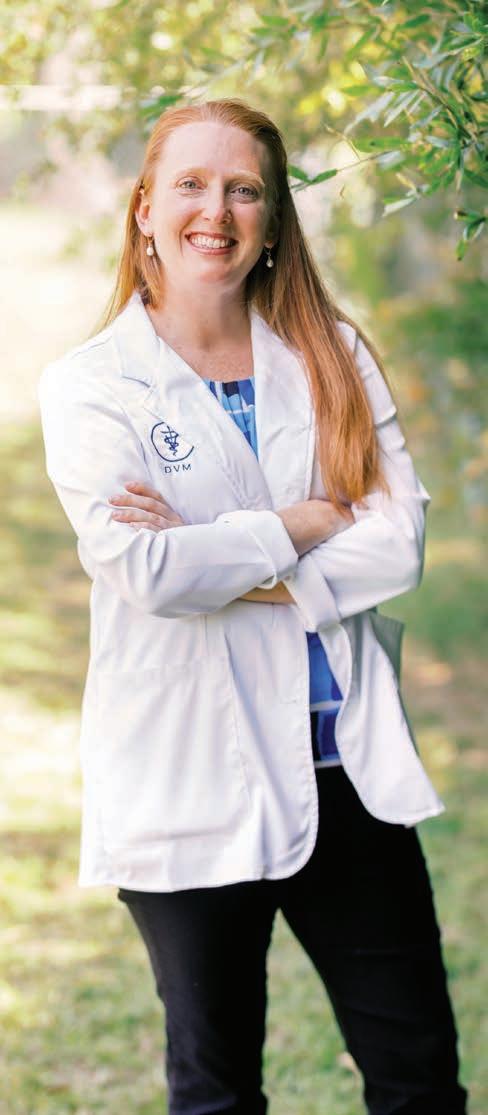
Dr. Lea fulfilled a lifelong dream in 2018 when she became the owner of her hometown veterinary practice, West Pine Animal Hospital — the same practice where she worked in high school and later as an associate veterinarian. Since then, she has expanded into ownership of two veterinarian practices including Raeford Animal Hospital.
• Background: A fifth generation Eastwood resident.
• Education: NC State University, Bachelor’s in Animal Science and Doctorate of Veterinary Medicine.
• Areas of Expertise: Veterinary Services exclusive to dogs & cats.
• Services: Wellness services, such as vaccines and preventative care, sick-patient diagnostics, treatment and hospitalization, surgical services including spay/neuter, soft tissue surgery and dental treatment, year-round custom boarding and bathing services.
• What Sets WPAH Apart: “We are a small community veterinary practice… the connection with our clients is palpable and our most valuable asset. Being cemented in the community for many years, my clients and I have come to share the highs and lows of many aspects of life, so I love that our visits are like catching up with an old friend.”
• P.A.W. Program: a customized Pet Annual Wellness plan including regular check-ups, recommended vaccines and routine testing.
• On the Horizon: Construction is underway for a total renovation to the Raeford Animal Hospital allowing for service of more pets with less wait time.
• Best Part of Being a Woman in Business: “Being a living example of what other young women can aspire to achieve in their own lives and communities. I absolutely love opportunities to talk about being a veterinarian with curious children or young people just starting their vet education.”
• At Home: Dr. Lea has three children with her husband, Jared, who is also the practice manager. They enjoy riding horses, NC State football games, and going to the beach. She is thankful for her support system of grandmothers and flexible babysitters.

5687 NC-211 | West End, NC 910.673.3103 westpinevet.com
Dr. Rebecca Fronheiser has practiced dentistry in Moore County since leaving the Army in 2020. She founded Vista Sleep Solutions in October 2024, where she now focuses on treating patients with specialized needs, like sleep apnea and TMJ disorders.
• Areas of Expertise: Solutions for sleep apnea and therapies for TMJ disorders.
• What Sets Her Apart: It’s extremely important for Dr. Fronheiser to create a welcoming environment at Vista Sleep Solutions. She makes a potentially overwhelming process as simple, supportive and personalized as it gets.
• New Offerings: Rebecca is currently collaborating with a nurse to support newborns with tethered oral issues, commonly known as tongue ties and lip ties. This partnership allows Vista the honor of providing early intervention and comprehensive care right from the start of life.
• Licensing and Services: Fellow of the Academy of General Dentistry (only 6% of dentists have this!), Diplomate of the American Board of Dental Sleep Medicine, Certificate in Clinical Sleep Health, certified with the Academy of Orofacial Myofunctional Therapy.
• What She’s Proud Of: Transforming what she’s learned into something she can teach others. “Knowledge has a ripple effect – the more people I empower through education, the more lives we can collectively change for the better.”
• Biggest Lesson Learned: “Growth comes from staying curious, open-minded and always willing to evolve –both personally and professionally.”
• At Home: Rebecca loves hiking and running with her Rhodesian Ridgeback, Quinn. In addition to being active, Rebecca enjoys quiet, simple pleasures like a cup of coffee on the back porch.



by
“As the new owner of Cookies N Moore, I’m proud to carry on a legacy of baking high-quality cookies that bring joy, connection, and sweet moments to our community.”


Cookies. Ice Cream. Events. Mobile Bakery at Red’s Corner 910.528.8293 cookiesnmoorenc@gmail.com
NEWBORN AND FAMILY PHOTOGRAPHER
Whether you’re celebrating life’s special milestones, capturing your growing family, building your professional brand, Lolly’s Lens Photography is your trusted source for your photography needs. Lolly’s Lens blends creativity, passion, personalization, and an experienced keen eye for detail to deliver stunning, high-quality images that speak to your heart.

@LollysLensPhotography LollysLens.com
As a top-producing realtor and two-time Best of the Pines Finalist, Tracy Gibson has deep roots in the community. She’s a Moore County native and mother of three, ready to put her extensive knowledge of the area’s schools, neighborhoods, and country clubs to work and help her clients achieve their real estate goals.
910.315.3269 tracy.gibson@sothebysrealty.com


“Whether you’re ready to book or just starting to dream, I’m here to help make your next journey truly unforgettable.”



910.638.1786 | karen.butler@cruiseplanners.com karenbutler.joyfuljourneyllc.com
To add an event, email us at
Although conscientious effort is made to provide accurate and up-to-date information, all events are subject to change and errors can occur! Please call to verify times, costs, status and location before planning or attending any events.
TUESDAY, JULY 1
BRAIN FITNESS. 10 - 11 a.m. Adults 18 and older are invited to enjoy short relaxation and brain enhancement exercises, ending with a mindfulness practice. Eve Gaskell will be the instructor. Free of charge. Douglass Community Center, 1185 W. Pennsylvania Ave., Southern Pines. Info: (910) 692-7376.
ALCOHOL INK ART. 11 a.m. - 12 p.m. Adults 55 and older can enjoy this easy and beautiful alcohol ink on tile art class. Free of charge. Douglass Community Center, 1185 W. Pennsylvania Ave., Southern Pines. Info: (910) 692-7376.
THURSDAY, JULY 3
EDUCATIONAL TRAINING. 11 a.m. - 12 p.m. Adults 55 and older can come for educational training. Free of charge. Douglass Community Center, 1185 W. Pennsylvania Ave., Southern Pines. Info: (910) 692-7376.
SUPPORT GROUP. 5:30 - 7:30 p.m. The Sandhills Chronic Kidney Disease Support Group meets the first Thursday of each month at the Clara McLean House, Shadowlawn Room, 20 First Village Drive, Pinehurst. Info: angela@sandhillsckd.com or kathy@sandhillsckd.com.
CONCERT AND FIREWORKS. 6 p.m. Enjoy a free concert and fireworks celebration featuring music by The Ray Band. Fireworks begin at 9:15 p.m. There will be kids’ activities, food and beverages available for purchase. Pinehurst Harness Track, 20 Beulah Hill Road S., Pinehurst. Info: www.vopnc.org.
FRIDAY, JULY 4
PARADE. 9:45 a.m. Honor the USA at the annual Independence Day Parade. Come early to participate in, or just enjoy, the pet parade when patriotic pets kick off the fun and lead the main parade. Stick around to enjoy the Sandhills Farmers Market. Tufts Memorial Park, 1 Village Green Road W., Pinehurst. Info: www.vopnc.org.
LUNCH BUNCH. 11:30 a.m. Adults 55 and older are invited to dine on different cuisines

Friday, July 4, 9:45 a.m. • Tufts Memorial Park
each month visiting restaurants in the area. Carpool with friends or meet at the restaurant. Dining locations will be chosen the week before. Info: (910) 692-7376.
SATURDAY, JULY 5
LIVE MUSIC. 6:30 p.m. Enjoy live music from Bonnie & Chuck Rhythms. Free of charge. Starworks Cafe & Taproom, 100 Russell Drive, Star. Info: www.StarworksNC.org.
SUNDAY, JULY 6
WRITING GROUP. 3 p.m. Are you interested in creating fiction, nonfiction, poetry or comics? Come to the Sunday Afternoon Writing Group. Connect with other writers and artists, chat about your craft, and get feedback about your work. All levels welcome. Southern Pines Public Library, 170 W. Connecticut Ave., Southern Pines. Info: lholden@sppl.net.
MONDAY, JULY 7
QUILTS OF VALOR. 12 - 4 p.m. Quilts of Valor meets the first Monday of each month to create lap quilts made especially for veterans. If you sew, bring your machine. If you don’t sew, you can iron or cut out fabrics for new designs. This is a free program. Moore
County Senior Enrichment Center, 8040 U.S. 15-501, West End.
MINECRAFT. 1 - 4 p.m. Ages 7 - 12 can enjoy Minecraft master engineering. Train Station, 235 N.W. Broad St., Southern Pines. Info: (910) 692-7376.
TUESDAY, JULY 8
HATHA YOGA. 10 - 11 a.m. Adults 55 and older can increase flexibility, balance, stability, and muscle tone while learning the basic principles of alignment and breathing. You may gain strength, improve circulation and reduce chronic pain practicing gentle yoga postures and mindfulness. Free of charge. Douglass Community Center, 1185 W. Pennsylvania Ave., Southern Pines. Info: (910) 692-7376.
CANVAS ART. 11 a.m. - 12 p.m. Adults 55 and older can enjoy this step by step tutorial with canvas art. Free of charge. Douglass Community Center, 1185 W. Pennsylvania Ave., Southern Pines. Info: (910) 692-7376.
AARP TALK. 12 - 12:30 p.m. Adults 55 and older are invited to join AARP for a fraud talk. Free of charge. Douglass Community Center, 1185 W. Pennsylvania Ave., Southern Pines. Info: (910) 692-7376.
WEDNESDAY, JULY 9
TECH HOUR. 11 a.m. Join a walk-in tech hour where you can get hands-on help with tech questions. Whether you’re new to computers, want to learn more about your smartphone, or want to learn how to use your eReader, library staff will guide you. Southern Pines Public Library, 170 W. Connecticut Ave., Southern Pines. Info: msilva@sppl.net.
THURSDAY, JULY 10
CORNHOLE. 12 - 1 p.m. Adults 55 and older are invited to work on their aim and have some fun with friends. Free of charge. Douglass Community Center, 1185 W. Pennsylvania Ave., Southern Pines. Info: (910) 692-7376.
STEAM. 2:30 - 3:30 p.m. Elementary schoolage children and their caregivers are invited to learn about topics in science, technology, engineering, art and math, and to participate in STEAM projects and activities. This month’s theme is “Pizzas! From Garden to Table.” Master gardener Kathy Byron will show how ingredients go from the garden to the plate. Southern Pines Public Library, 170 W. Connecticut Ave., Southern Pines. Info: (910) 692-8235 or www. sppl.net.



FRIDAY, JULY 11
HORSE EVENT. Sedgefield H/J “C”: Hunter/ Jumper show. The event runs through July 13. Carolina Horse Park, 2814 Montrose Road, Raeford. Info: www.carolinahorsepark.com.
SATURDAY, JULY 12
FISHING. 9 - 10:30 a.m. Ages 5 - 16 can attend an introduction to fishing. Reservoir Park, 300 Reservoir Park Drive, Southern Pines. Info: (910) 692-7376.
TRAIL AMBASSADORS. 9 a.m. - 2 p.m. All ages can enjoy the trails around the reservoir. Reservoir Park, 300 Reservoir Park Drive, Southern Pines. Info: (910) 692-7376.
STORYTIME. 10:15 a.m. Saturday Storytime is a once-a-month program for children from birth to age 5. Enjoy stories, songs, rhymes and smiles where caregivers and young children can interact and explore the fun of language and early literacy. There are space constraints for this indoor story time. Southern Pines Public Library, 170 W. Connecticut Ave., Southern Pines. Info: www.sppl.net.
SUNDAY, JULY 13
JAZZ. 4 - 5 p.m. Community Congregational Church presents “Cool Jazz for a Hot Day.”
Community Congressional Church, 141 N. Bennett St., Southern Pines. Info: www.ticketmesandhills.com.
MONDAY, JULY 14
FUNDRAISER. 7:30 a.m. Habitat for Humanity of the N.C. Sandhills hosts its Women Build Golf Tournament. Forest Creek Golf Club, 100 Meyer Farm Drive, Pinehurst. Info: www.sandhillshabitat.org.
SUMMER ROCKSTARS. 8:30 a.m. - 1 p.m. Kids ages 7 - 14 can learn about music. Whitehall, 490 Pee Dee Rd., Southern Pines. Info: (910) 692-7376.
LEGO. 1 - 4 p.m. Ages 7 - 12 can enjoy machine mayhem with Lego materials. Train Station, 235 N.W. Broad St., Southern Pines. Info: (910) 692-7376.
PIZZA ‘N’ PREVIEWS. 2:30 - 4:30 p.m. Young adult fiction readers get a preview of brand new books hitting the shelves this summer. Drop in anytime during the specified hours. Pizza is first come, first served. Southern Pines Public Library, 170 W. Connecticut Ave., Southern Pines. Info: (910) 692-8235 or www.sppl.net.
JAZZ CONCERT. 6:30 - 8 p.m. The Sandhills Community College Jazz Band continues its summer concert series with “A Swingin’









Summer: Count Basie Meets Cole Porter.” Free and open to the public. Tickets required. Owens Auditorium, 3395 Airport Road, Pinehurst. Info: www.ticketmesandhills.com.
PHOTO CLUB. 7 p.m. Sandhills Photo Club’s monthly meeting presents “Travel Photography: Documenting Culture and Life Events by Laura Gingerich.” Guests are welcome. Sandhills Horticultural Center Ball Visitors Center, 3245 Airport Road, Southern Pines. Info: www. sandhillsphotoclub.org.
TUESDAY, JULY 15
BRAIN FITNESS. 10 - 11 a.m. Adults 18 and older are invited to enjoy short relaxation and brain enhancement exercises, ending with a mindfulness practice. Eve Gaskell will be the instructor. Free of charge. Douglass Community Center, 1185 W. Pennsylvania Ave., Southern Pines. Info: (910) 692-7376.
BINGO. 11 a.m. - 12 p.m. Adults 55 and older are invited to play 10 games of bingo. Cost is $4 for residents and $6 for non-residents. Douglass Community Center, 1185 W. Pennsylvania Ave., Southern Pines. Info: (910) 692-7376.
TWEEN BOOK TASTING. 2:30 p.m. Read a chapter from a popular book as a group, learn how to find a book that’s a good fit for you, then explore different genres and new books at


the “tasting tables.” For ages 9 - 12. Southern Pines Public Library, 170 W. Connecticut Ave., Southern Pines. Info: (910) 692-8235 or www. sppl.net.
WEDNESDAY, JULY 16
PLAY TIME IN THE PARK. 10 a.m. - 12 p.m. Kids ages 3 – 12 can bring their parents and join other friends for giant checkers, giant Jenga, bubbles, fun and more. Don’t miss these two hours of fun. Who knows, you may meet some new friends. Downtown Park, Southern Pines. Info: (910) 692-7376.
SLEEPAWAY CAMP. 3:30 p.m. At The Library After School (ATLAS) is an after-school program for children ages kindergarten through second grade. July’s special event is a stuffed animal sleepaway camp. Bring a stuffed animal for a three night “summer camp” sleepover. Southern Pines Public Library, 170 W. Connecticut Ave., Southern Pines. Info: (910) 692-8235 or www.sppl.net.
FRIDAY, JULY 18
POPSICLE POP UP. 12 - 1 p.m. All ages can cool off with some popsicles. Reservoir Park, 300 Reservoir Park Drive, Southern Pines. Info: (910) 692-7376.


SATURDAY, JULY 19
CRAFT DAYS. Children and their families can come by the library for drop-in craft days and work on crafts and coloring at their own pace. Southern Pines Public Library, 170 W. Connecticut Ave., Southern Pines. Info: (910) 692-8235 or www.sppl.net.
WORKSHOP. 9:30 a.m. Come to the “Fix It, Build It, Design It” workshop for all levels. Cost is $250. Starworks Metal Studio, 100 Russell Drive, Star. Info: www.StarworksNC.org.
NATURE CONNECTION. 10 - 11 a.m. All ages can learn about nature. Whitehall, 490 Pee Dee Rd., Southern Pines. Info: (910) 692-7376.
PLANETARIUM TRIP. 1 - 6:30 p.m. Teens ages 13 - 16 can tour the Morehead Planetarium and then have dinner at Raising Cane’s. Busses depart from the Rec Center at Memorial Park, 160 Memorial Park Court, Southern Pines. Cost is $29 for residents and $40 for non-residents. Info: (910) 692-7376.
HORSE EVENT. War Horse schooling event. The event runs through July 20. Carolina Horse Park, 2814 Montrose Road, Raeford. Info: www. carolinahorsepark.com.
DANCE CLUB. 6:30 - 9:30 p.m. Get your dancing shoes on and join the fun with Carolina Pines Dance Club. Learn swing, shag, ballroom,



Latin and line dancing. Given Outpost/Roast Office, 95 Cherokee Road, Pinehurst. Info: (910) 331-9965.
TUESDAY, JULY 22
DANCE. 3 - 5 p.m. Ages 8 and older can learn Scottish country dance. Douglass Community Center, 1185 W. Pennsylvania Ave., Southern Pines. Info: (910) 692-7376.
WEDNESDAY, JULY 23
PICNIC IN THE PARK. 11 a.m. - 12 p.m. Join Southern Pines Parks and Recreation for fun games, crafts and a story time. Bring your own picnic lunch. For ages 3 - 12. Free of charge. Elizabeth Rounds Park, 570 Pee Dee Rd., Southern Pines. Info: (910) 692-7376.
BOOK EVENT. 12 - 1 p.m. Join an online conversation between Mike Ayers, author of Sharing in the Groove, and Kimberly Daniels Taws from The Country Bookshop. Info: www.ticketmesandhills.com.
FINE ARTS FESTIVAL. The Arts Council of Moore County presents its annual Fine Arts Festival. Artwork will be on exhibit from July 23 – Aug. 27. The opening reception will be from 6 - 8 p.m. on Aug. 1. Arts Council of Moore County, 482 E. Connecticut Ave.,

Southern Pines. Info: (910) 692-2787 or www. mooreart.org.
BOOK CHAT AND CHILL. 5:30 p.m. Wind down with a relaxed evening of bookish conversation. Bring a book to chat about, or one to swap, and enjoy great company, good vibes, and plenty of literary inspiration. Southern Pines Growler, 160 W. New York Ave., Southern Pines. Info: mhoward@sppl.net.
JAZZ NIGHT. 6:30 p.m. Enjoy jazz music from Soul Noises. Free of charge. Starworks Cafe & Taproom, 100 Russell Drive, Star. Info: www. StarworksNC.org.
FRIDAY, JULY 25
PADDLE UNDER THE STARS. 8:30 p.m. Adults 18 and older can enjoy a mix of science and mythology about the night sky while kicking back in canoes or kayaks on the reservoir. Bring your own canoe, kayak or paddleboard, flashlight and life jacket. Reservoir Park, 300 Reservoir Park Drive, Southern Pines. Info: (910) 692-7376.
SATURDAY, JULY 26
CRAFT SWAP. 10 a.m. Looking for craft ideas for rainy days? Bring your extra craft supplies or come and see what’s up for grabs at the craft
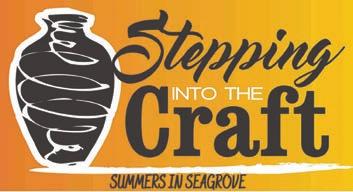


swap. Southern Pines Public Library, 170 W. Connecticut Ave., Southern Pines. Info: (910) 692-8235 or www.sppl.net.
KAYAKING. 10 a.m. - 12 p.m. Adults 18 and older can attend an introduction to kayaking. Reservoir Park, 300 Reservoir Park Drive, Southern Pines. Info: (910) 692-7376.
HORSE EVENT. Rosinburg Summer Dressage show. The event runs through July 27. Carolina Horse Park, 2814 Montrose Road, Raeford. Info: www.carolinahorsepark.com.
TEEN CAREERS PANEL. 2:30 p.m. Join a special panel featuring two guests, Melissa Ollison of Studio Violet and graphic designer Julia Hinson of Fall Line Creative, who turned their creative passions into careers. Hear their stories, ask questions, and get inspired. Southern Pines Public Library, 170 W. Connecticut Ave., Southern Pines. Info: (910) 692-8235 or www.sppl.net.
PEACHGRASS FESTIVAL. 6 p.m. Enjoy live music and good food at the Weymouth Center for the Arts & Humanities’ PeachGrass Festival, 555 E. Connecticut Ave., Southern Pines. Info: www.ticketmesandhills.com.
LIVE MUSIC. 6:30 p.m. Listen to live music from Landon Byrd. Free of charge. Starworks Cafe & Taproom, 100 Russell Drive, Star. Info: www.StarworksNC.org.











August 1-August
Art pictured: Time for Breakfast by Debbie Whitley; South Mountains State Park by Skyeler Paul Risen by Meredith Markfield; Fields of Flowers by Linda Bruening

SUNDAY, JULY 27
FABRIC WORKSHOP. 2:30 p.m. Garlenia Davis will lead “Fabric Crowns,” a joy-filled workshop for women of all ages. Learn how to transform fabric scarves into beautiful head wraps. Southern Pines Public Library, 170 W. Connecticut Ave., Southern Pines. Info: (910) 692-8235 or www.sppl.net.
MONDAY, JULY 28
BOOK EVENT. 5 - 6:30 p.m. The Country Bookshop welcomes Karen White to discuss her book, The Last Carolina Summer. The Country Bookshop, 140 N.W. Broad St., Southern Pines. Info: www.ticketmesandhills.com.
WEDNESDAY, JULY 30
BARK IN THE PARK. 10 - 11a.m. Bring your furry friend for games, crafts and a dogtactic time. Martin Park, 350 Commerce Ave., Southern Pines. Info: (910) 692-7376.
cut & attach this card to back upper left of art.
THURSDAY, JULY 31
WELLNESS CLASSES. 10 - 11:30 a.m. Adults 18 and older are invited to explore different educational topics that can improve overall mind, body and spirit. Free of charge. Douglass Community Center, 1185 W. Pennsylvania Ave., Southern Pines. Info: (910) 692-7376.
UPCOMING EVENTS
SUNDAY, AUGUST 3
Community Center, 1185 W. Pennsylvania Ave., Southern Pines. Info: (910) 692-7376.
CHAIR YOGA. 9 - 10 a.m. For adults 55 and older. Help off set body aches encountered with desk work in an accessible yoga class for bodies not able to easily get up from and down to the floor. Do standing or sitting in a chair. Douglass Community Center, 1185 W. Pennsylvania Ave., Southern Pines. Info: (910) 692-7376.
SENIOR FITNESS. 11 a.m. Adults 55 and older are invited to a TruFit gym class to improve strength, mobility and flexibility. Douglass Community Center, 1185 W. Pennsylvania Ave., Southern Pines. Info: (910) 692-7376.
RESTORATIVE YOGA. 12 p.m. For adults 55 and older. Practice gentle movements that may help alleviate pain, improve well-being and circulation. Bring your own mat. Free of charge. Douglass Community Center, 1185 W. Pennsylvania Ave., Southern Pines. Info: (910) 692-7376.
GAME ON. 1 p.m. For adults 55 and older. You and your friends are invited to play various games such as corn hole, badminton, table tennis, shuff leboard, trivia games, and more. Each week enjoy a different activity to keep you moving and thinking. Compete with friends and make new ones all for free. Douglass Community Center, 1185 W. Pennsylvania Ave., Southern Pines. Info: (910) 692-7376.
For adults 55 and older. Douglass Community Center, 1185 W. Pennsylvania Ave., Southern Pines. Info: (910) 692-7376.
CHESS. 1:30 - 5 p.m. Join a chess group, whether you’re a beginner or have been playing for a while. This is a free program. Moore County Senior Enrichment Center, 8040 U.S. 15-501, West End.
LINE DANCE. 4:45 p.m. Put on your dancing shoes and line dance. This is for beginners and is a free program. Moore County Senior Enrichment Center, 8040 U.S. 15-501, West End.
WEDNESDAYS
CHAIR AEROBICS. 10 - 11 a.m. For adults 55 and older. Put on your boogie shoes and jam. Get fit partying up a sweat to great music through the ages. Stand and chair dance to this energizing, low-impact aerobic workout. Douglass Community Center, 1185 W. Pennsylvania Ave., Southern Pines. Info: (910) 692-7376.
BRAIN BOOST. 10 - 11 a.m. Test your memory while creating new brain connections. This is a free program. Moore County Senior Enrichment Center, 8040 U.S. 15-501, West End.
CAT VIDEO FEST. 1:30 - 3 p.m. Come watch some silly cat videos for a good cause. Cameo Art House Theatre, 225 Hay St., Fayetteville. Info: www.ticketmesandhills.com.
TUESDAY, AUGUST 5
GHOST ALMANAC. 7:30 - 9 p.m. Ghost Almanac is an 80-minute program of short horror fi lms with live musical accompaniment and sound effects. Cameo Art House Theatre, 225 Hay St., Fayetteville. Info: www.ticketmesandhills.com.
WEEKLY EVENTS
MONDAYS
Please cut & attach this card to back upper left of art. Complete t his form & deliver with y our entries on the following dates: July 81 2 (10a4p) A rt removal date s are Aug. 2 8 & 29 (10a4p)
5 FAF ~ ENTRY # 2 ID CARD
WORKSPACES. 7 a.m. - 3 p.m. The Given Tufts Bookshop has a pop-in co-workspace open on Mondays and Thursdays in the upstairs conference room. Bookshop floor and private meeting room by reservation only. Info: www. giventuftsfoundation.com.
WORKOUTS. 8:30 a.m. - 4:30 p.m. Adults 55 and older are invited to get their workout on. Open Monday through Friday. Cost for six months: $15/resident; $30/non-resident. Douglass
TAI CHI. 1 - 2 p.m. For adults 55 and older. Improve your balance to help reduce the rate of falls in older adults while enhancing relaxation, vitality, and posture. Free of charge. Douglass Community Center, 1185 W. Pennsylvania Ave., Southern Pines. Info: (910) 692-7376.
BRIDGE. 1:30 - 4:30 p.m. For adults 55 and older. Enjoy games of bridge with friends. Douglass Community Center, 1185 W. Pennsylvania Ave., Southern Pines. Info: (910) 692-7376.
TUESDAYS
PLAYFUL LEARNING. 10 a.m. - 2 p.m. Come for an open, drop-in, educational playtime for children ages 0 - 3 years to interact with other children. Given Memorial Library, 150 Cherokee Road, Pinehurst. Info: (910) 295-3642.
BABY RHYMES. 10:15 a.m. Baby Rhymes is specially designed for the youngest learners (birth- 2) and their caregivers. Repetition and comforting movements make this story time perfect for early development and brain growth. There will be a duplicate session at 10:45 a.m. An active library card is required. Dates this month are July 8, 15, 22 and 29. Southern Pines Public Library, 170 W. Connecticut Ave., Southern Pines. Info: (910) 692-8235 or www. sppl.net.
GAME DAY. 12 p.m. Enjoy bid whist and other cool games all in the company of great friends.
KNITTING. 10 - 11 a.m. Learn how to knit or just come and enjoy knitting with other people. This is a free program. Moore County Senior Enrichment Center, 8040 U.S. 15-501, West End.
BABY STORYTIME. 10 - 11 a.m. Have fun developing the foundation for your baby’s later reading with stories, songs and play. Open to parents and caregivers of infants from newborn to 24 months. Moore County Library, 101 W. Saunders St., Carthage. Info: (910) 947-5335.
LEARN AND PLAY. 10 a.m. - 12 p.m. Attend an open play date with your toddler or preschooler involving developmental toys and puzzles as well as early literacy tips for parents and caregivers to incorporate into their daily activities. Dates this month are July 2, 9, 16, 23 and 30. Southern Pines Public Library, 170 W. Connecticut Ave., Southern Pines. Info: (910) 692-8235 or www.sppl.net.
SENIOR FITNESS. 11 a.m. Adults 55 and older are invited to a TruFit gym class to improve strength, mobility and flexibility. Douglass Community Center, 1185 W. Pennsylvania Ave., Southern Pines. Info: (910) 692-7376.
PIANO. 11 a.m. - 12 p.m. Join Flint Long to play piano or just listen. This is a free program. Moore County Senior Enrichment Center, 8040 U.S. 15-501, West End.
LINE DANCING. 12 - 1 p.m. Looking for new ways to get your daily exercise in and care for yourself? Try line dancing. For adults 55 and older. Douglass Community Center, 1185 W.













Pennsylvania Ave., Southern Pines. Info: (910) 692-7376.




CHAIR VOLLEYBALL. 1 - 2 p.m. For adults 55 and older. Get fit while having fun. Free to participate. Douglass Community Center, 1185 W. Pennsylvania Ave., Southern Pines. Info: (910) 692-7376.
BRIDGE. 1:30 - 4:30 p.m. For adults 55 and older. Enjoy games of bridge with friends. All materials included. Douglass Community Center, 1185 W. Pennsylvania Ave., Southern Pines. Info: (910) 692-7376.
DANCE. 2 - 2:30 p.m. For adults 55 and older. Instructor Maria Amaya will teach dance fitness in a class designed for anyone who wants to gently and gradually increase cardio function, mobility and balance and have fun at the same time. Free of charge. Douglass Community Center, 1185 W. Pennsylvania Ave., Southern Pines. Info: (910) 692-7376.
GIVEN STORY TIME. 10 a.m. Bring your preschooler to enjoy stories, songs and activities. Given Memorial Library, 150 Cherokee Road, Pinehurst. Info: 910-295-3642.
BALANCE AND FLEXIBILITY. 10 - 11 a.m. Adults 55 and older are invited to enjoy a class that may help reduce the risk of taking a tumble and increase your ability to recover if you do. Free of charge. Douglass Community Center, 1185 W. Pennsylvania Ave., Southern Pines. Info: (910) 692-7376.
MUSIC AND MOTION. 10:15 and 10:45 a.m. Does your toddler like to move and groove? Join “Music and Motion” to get those wiggles out and work on gross and fine motor skills. For ages 2 - 5. An active library card is required. Dates this month are July 10, 17, 24 and 31. Southern Pines Public Library, 170 W. Connecticut Ave., Southern Pines. Info: (910) 692-8235 or www.sppl.net.






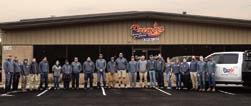

LINE DANCING. 2 p.m. The town of Vass will host line dancing for seniors every other Wednesday. Cost is $5 per session. Vass Town Hall, 140 S. Alma St., Vass. Info: www. townofvassnc.gov.
TAI CHI. 2 - 3 p.m. For adults 55 and older. Improve your balance to help reduce the rate of falls in older adults while enhancing relaxation, vitality, and posture. Free of charge. Douglass Community Center, 1185 W. Pennsylvania Ave., Southern Pines. Info: (910) 692-7376.
LIBRARY PROGRAM. 3:30 p.m. At The Library After School (ATLAS) is an after-school program for children ages kindergarten through second grade who enjoy activities, crafts, stories and meeting new friends. Dates this month are July 9, 16, 23 and 30. Southern Pines Public Library, 170 W. Connecticut Ave., Southern Pines. Info: (910) 692-8235 or www.sppl.net.
TAI CHI. 6:30 p.m. Learn tai chi. There is no age limit and the classes are open to the public. Cost is $10 per class. Seven Lakes West Community Center, 556 Longleaf Drive, Seven Lakes. Info: (910) 400-5646.
WORKSPACES. 7 a.m. - 3 p.m. The Given Tufts Bookshop has a pop-in co-workspace open on Mondays and Thursdays in the upstairs conference room. Bookshop floor and private meeting room by reservation only. Info: www. giventuftsfoundation.com.
MOORE COUNTY FARMERS MARKET. 9 a.m. - 1 p.m. The year-round market features “producer only” vendors within a 50-mile radius providing fresh, local and seasonal produce, fruits, pasture meats, eggs, potting plants, cut flowers and local honey. Crafts, baked goods, jams and jellies are also available. Market is located at the Armory Sports Complex, 604 W. Morganton Road, Southern Pines.
GENTLE YOGA. 12:30 - 1:30 p.m. Adults 55 and older are invited to unwind, recharge and find peace in your week. Free of charge. Douglass Community Center, 1185 W. Pennsylvania Ave., Southern Pines. Info: (910) 692-7376.
CHESS AND MAHJONG. 1 p.m. For adults 55 and older. Bring a board and a friend. Douglass Community Center, 1185 W. Pennsylvania Ave., Southern Pines. Info: (910) 692-7376.
IMPROVERS LINE DANCE. 3 - 5:30 p.m. Put on your dancing shoes and line dance. This is a free program. Moore County Senior Enrichment Center, 8040 U.S. 15-501, West End.
LITTLE U. 3:30 p.m. Little U is Southern Pines Public Library’s preschool program for children ages 3 1/2 – 5 featuring stories, songs, rhymes and activities that explore the world of books, language, and literacy. Little U is a fun and interactive program designed to help preschoolers develop early literacy skills in preparation for kindergarten and beyond. Dates this month are July 10, 17, 24 and 31. Southern Pines Public Library, 170 W. Connecticut Ave., Southern Pines. Info: (910) 692-8235 or www.sppl.net.
TRIVIA NIGHT. 7 - 9 p.m. Come enjoy a beer and some trivia. Hatchet Brewing Company, 490 S.W. Broad St., Southern Pines. Info: www. hatchetbrewing.com.
AEROBIC DANCE. 9 - 10 a.m. For adults 55 and older. Enjoy this low-to-moderate impact class with energizing music for an overall cardio and strength workout. Free of charge. Douglass Community Center, 1185 W. Pennsylvania Ave., Southern Pines. Info: (910) 692-7376.
JAM SESSION. 9:30 - 11:30 a.m. Do you like to play an instrument, sing or just listen to music? Come join a jam session. This is a free program. Moore County Senior Enrichment Center, 8040 U.S. 15-501, West End.
TAP CLASS. 10 - 11:30 a.m. For adults 55 and older. All levels welcome. Cost per class: $15/resident; $30/non-resident. Douglass Community Center, 1185 W. Pennsylvania Ave., Southern Pines. Info: (910) 692-7376.
SENIOR FITNESS. 11:30 a.m. Adults 55 and older are invited to a TruFit gym class to improve strength, mobility and flexibility. Douglass Community Center, 1185 W. Pennsylvania Ave., Southern Pines. Info: (910) 692-7376.
QIGONG. 1 p.m. For adults 55 and older. Classes consist of chair and standing movements that can help soothe achy feet and tight hips while easing lower back pain and restrictions in mobility. Free of charge. Douglass Community Center, 1185 W. Pennsylvania Ave., Southern Pines. Info: (910) 692-7376.
FARMERS MARKET. 1 - 6 p.m. Visit the Monroe Street Farmers Market featuring locally grown produce, raised meats, honey, breads, pastries and more. Quida’s Food Truck Park, 310 Monroe St., Carthage. Info: monroestreetmarket310@gmail.com.
BRIDGE. 1:30 - 4:30 p.m. For adults 55 and older. Enjoy games of bridge with friends. All materials included. Douglass Community Center, 1185 W. Pennsylvania Ave., Southern Pines. Info: (910) 692-7376.
SATURDAYS
MOORE COUNTY FARMERS MARKET. 8 a.m. - 12 p.m. The market features “producer only” vendors within a 50-mile radius providing fresh, local and seasonal produce, fruits, pasture meats, eggs, potting plants, cut flowers and local honey. Crafts, baked goods, jams and jellies are also available. The market runs through the Saturday before Thanksgiving. Downtown Southern Pines, 156 S.E. Broad St., Southern Pines.
SANDHILLS FARMERS MARKET. 10 a.m. –1 p.m. The Sandhills Farmers Market features many of the area’s farms, nurseries, bakeries, meat and egg providers, cheesemakers and specialty food producers. The vendors are on site at Tufts Memorial Park, 1 Village Green Road W., Pinehurst through October 5. For more information visit: www.moorefarmfresh.com.
CABIN TOURS. 2 - 4 p.m. The Moore County Historical Association’s Bryant House and McLendon Cabin can be toured with a docent on the second and fourth Sundays of the month. Admission is free. Tours run through October. Bryant House, 3361 Mount Carmel Rd., Carthage. Info: (910) 692-2051 or www. moorehistorycom. PS





























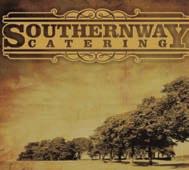




































































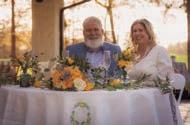


































































































































































































































































































































































































































































































































































The Village Arboretum
May 6, 2025
Photographs by Diane McKay






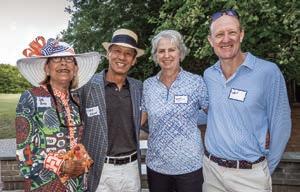


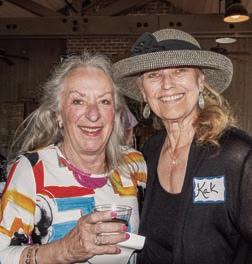



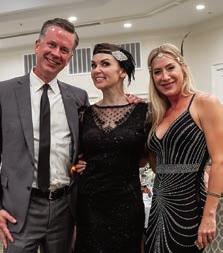
Pinehurst Country Club
April 26, 2025
Photographs by Dale Moegling


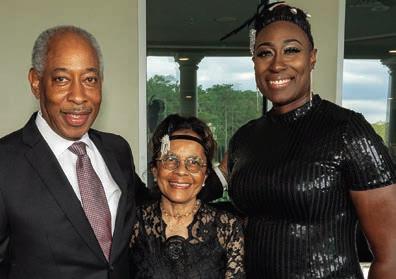



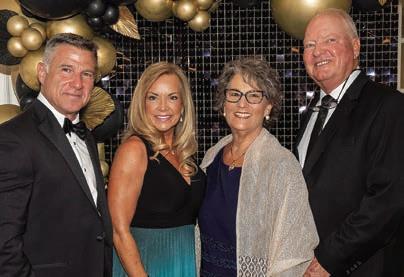

910.977.5656 www.battlefieldmuseum.org www.warpathmilitaria.com














ACROSS
1. Daisylike bloom
6. Drag
10. Concrete section
14. $
15. Hawaiian strings
16. Earned
17. Black billiard ball
18. David, e.g.
19. Buffaloʼs relative
20. Anxiously nervous
22. Bouncer's check
24. Western blue flag, e.g.
25. Renaissance Faire coats
26. Cleared a frosty windshield
29. Blue picture
30. Ashes holder
31. Except
33. $
37. $
39. Gillette product
41. Aria, e.g.
42. Bar, at the bar
44. Traffic stopper
46. Holiday drink
47. 18-wheelers
49. Thrusts
51. C2H5OH
54. Advertising sign
55. “ Now!”
56. Leans on (2 wds)
59. Make, as money
60. Pinocchio, at times
62. $
Across 1. Daisylike bloom
64. Icelandic epic
65. Rainbows
6. Drag
66. Adjust
67. Dates
10. Concrete section
68. Dispise
14. $, (hyph)
69. Affirmatives
15. Hawaiian strings
16. Earned
1. Trick taker, often
17. Black billiard ball
2. Barberʼs motion
18. David, e.g.
3. Forum wear
19. Buffalo's relative
4. Italian, e.g.
5. Went to bed
20. Anxiously nervous
22. Bouncer's check
6. $
7. “Agreed”
24. Western blue flag, e.g.
8. Dream state init.
9. Saw
25. Renaissance Faire coats
10. $
11. Hawaiian island
26. Cleared a frosty windshield
12. Beautify
13. Abacus components
29. Blue picture
21. Autumn drink
30. Ashes holder
23. Liquid drop
31. Except
25. Court figure
33. $
26. Fuhrerʼs ally
37. $
27. Time periods
28. Acad.
39. Gillette product
41. Aria, e.g.
65. Rainbows
36. Hounds
13. Abacus components
38. Shouts of praise
66. Adjust
67. Dates
68. Dispise
29. “Raiders of the Lost Ark” villains
42. Bar, at the bar
32. So-called “royal herb”
44. Traffic stopper
34. A long, long time
35. “ Thanks ___!”
46. Holiday drink
47. 18-wheelers
49. Thrusts
51. C2H5OH
54. Advertising sign
55. "Now!"
56. Leans on (2 wds)
59. Make, as money
60. Pinocchio, at times
62. $
64. Icelandic epic
40. Allude
21. Autumn drink
43. Confined, with “ up ”
23. Liquid drop
45. Lunchtime
69. Affirmatives Down
48. $
25. Court figure
26. Fuhrer's ally
50. Boot part
27. Time periods
51. Fencing equipment
52. Barter
1. Trick taker, often
53. Throng
2. Barber's motion
3. Forum wear
4. Italian, e.g.
28. Acad.
29. "Raiders of the Lost Ark" villains
32. So-called "royal herb"
54. Care for
50. Boot part
56. Boorʼs lack
51. Fencing equipment
57. Sounds of reproof
52. Barter
58. Arch type
61. Bank offering, for short
53. Throng
63. “48___”
54. Care for
56. Boor's lack
57. Sounds of reproof
58. Arch type
61. Bank offering, for short
63. "48___"
Sudoku:
Fill in the grid so every row, every column and every 3x3 box contain the numbers 1-9.
5. Went to bed 6. $ 7. "Agreed"
8. Dream state init. 9. Saw 10. $
11. Hawaiian island
12. Beautify
Puzzle answers on page 121 Mart Dickerson lives in Southern Pines and welcomes suggestions from her fellow puzzle masters. She can be reached at martaroonie@gmail.com.
34. A long, long time
35. "Thanks ___!"
36. Hounds
38. Shouts of praise
40. Allude
43. Confined, with "up"
45. Lunchtime
48. $

BY JIM MORIARTY
Some years ago I tried to convince the editor of Coastal Living to do a story on the search for the ultimate beach hot dog. He looked at me as if I’d suggested he commit hari-kari with a shucking knife. If Coastal Living was going to talk about food, he said, that food was going to come out of the ocean one way or the other. I felt like a one-eyed king in the land of the blind.
This is not uncommon for those of us who consider the hot dog to be the most highly evolved of all God’s consumables. I came by this understanding as a mere child when dinner on humid summer nights often consisted of a hot dog and a refreshing pint of cold root beer at the B&K drive-in. Slather on the mustard. Dish on the relish. Sprinkle on the onion. No ketchup, please. We weren’t heathens, after all.
Later, as I matured, hot dogs purchased on sweltering afternoons at Wrigley Field from ballpark vendors singing “red hots, get yer red hots” as if it was Verdi’s Rigoletto only served to enhance my belief in the lofty place occupied by the hot dog in the hierarchy of all food. Passing hot dogs, slathered in mustard and chased by an Old Style, down a row of Cubs fans like a bucket brigade putting out a four alarm fire was its own rite of passage. No ketchup, of course. We weren’t savages, you know.
I have a friend at my pub, the Bitter and Twisted, who is as committed to the noble hot dog as anyone I’ve ever known. He is widely traveled,
worldly beyond my comprehension, and he claims, with apologies to his West Texas roots, that the very best hot dog he’s ever had was in Reykjavik, Iceland, at Bæjarins Beztu Pylsur, which translates to “The Town’s Best Hot Dogs.” People line up down the block and around the corner to get them, he says. They sell 1,000 a day. If it’s not the town’s best dog I can’t imagine what is.
Hot dogs are beyond utilitarian. They are civilized — yet another reason why they reign supreme — which brings me to The Hot Dog Rule. I don’t mean to cast aspersions at Michelin and all its fancyschmancy stars, but The Hot Dog Rule is as basic to the laws governing human behavior as not wearing a white shirt when you eat spaghetti. In sum, no sandwich should be more difficult to eat than a hot dog.
When it becomes necessary to deconstruct a sandwich as tall and as vertical on the plate as the leaning tower of Pisa, layered with slabs of tomato, piles of pickles, heads of lettuce, pounds of processed deli meats, mountains of kale, all held together with plastic picks the size of the Excalibur, such a sandwich must be found to be in violation of The Hot Dog Rule. If you have to break your sandwich down into all its component parts as though you’re rebuilding an automobile transmission before you can think about managing a bite, such a sandwich must be found to be in violation of The Hot Dog Rule.
I admit, there are gray areas. For one thing, there is the matter of spillage. But to be perfectly honest, a snippet or two of diced onion or a soupçon of relish falling overboard is hardly the same thing as needing a forceps to pry your jaw open wide enough to take a bite of a sandwich the size of a MINI Cooper.
As for chili dogs, I’m going to have to plead the fifth. PS
































